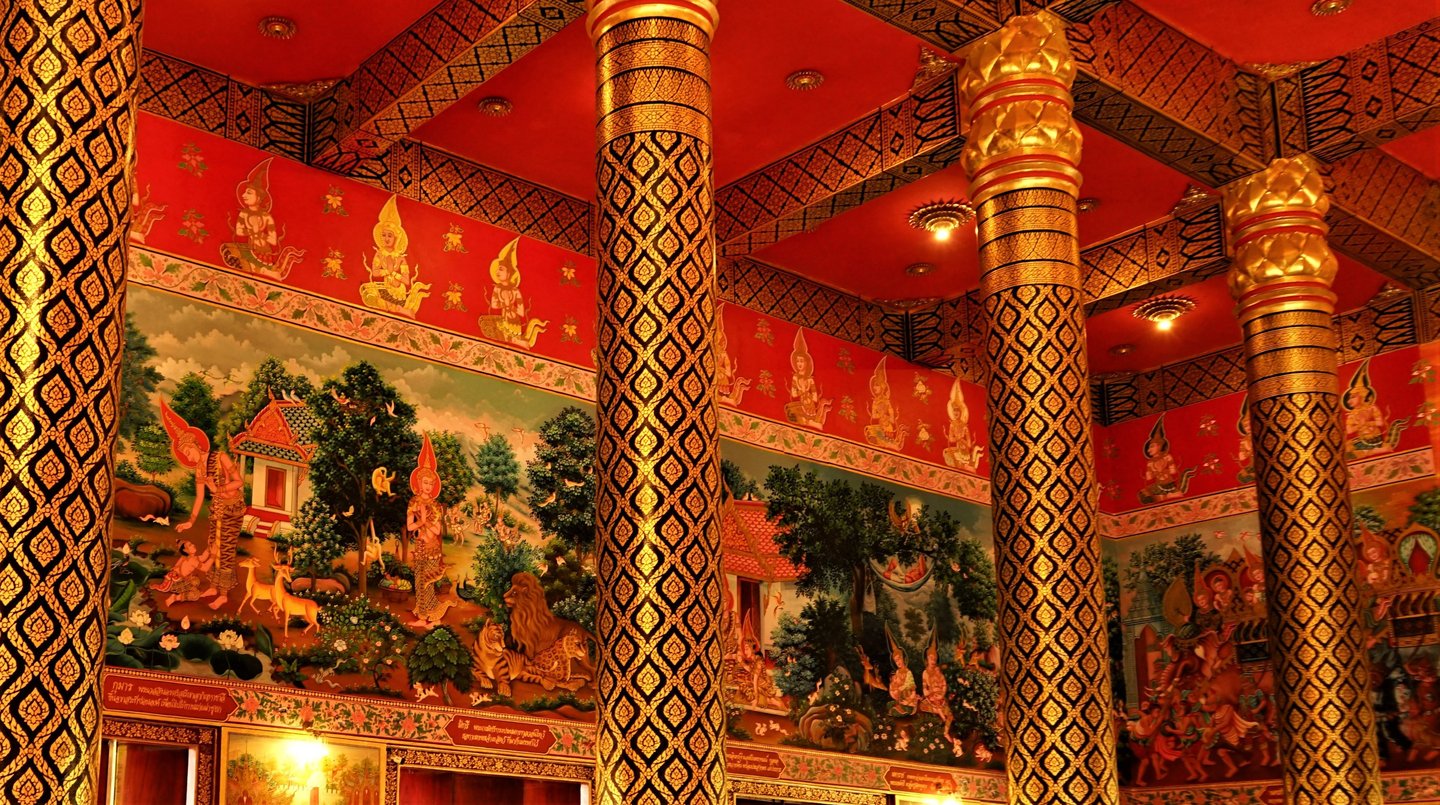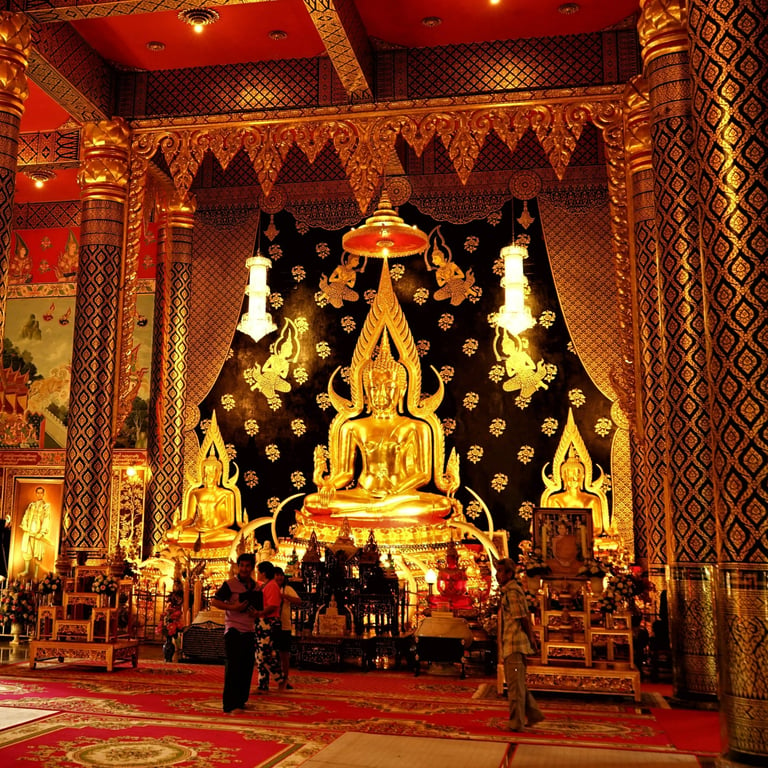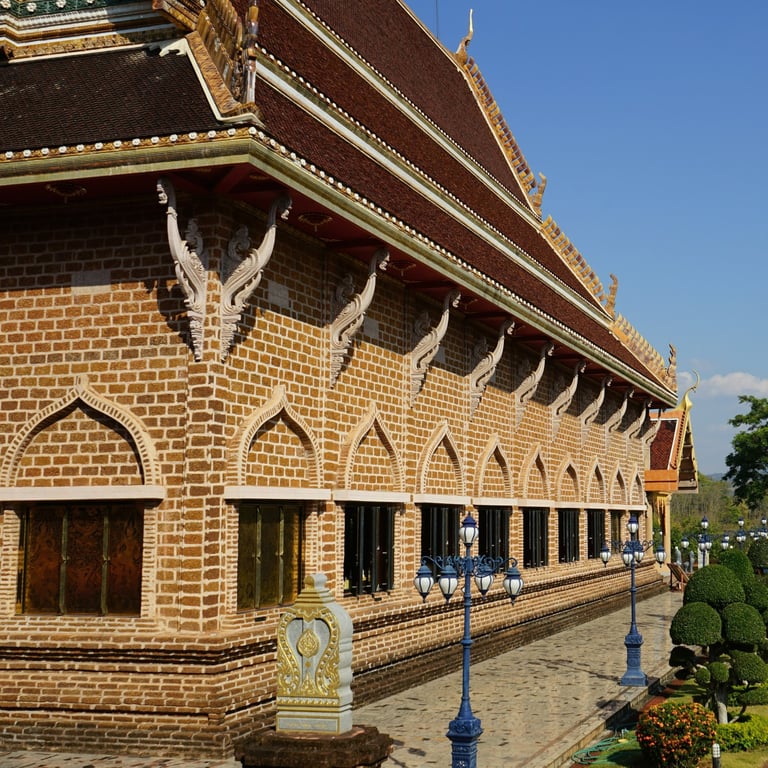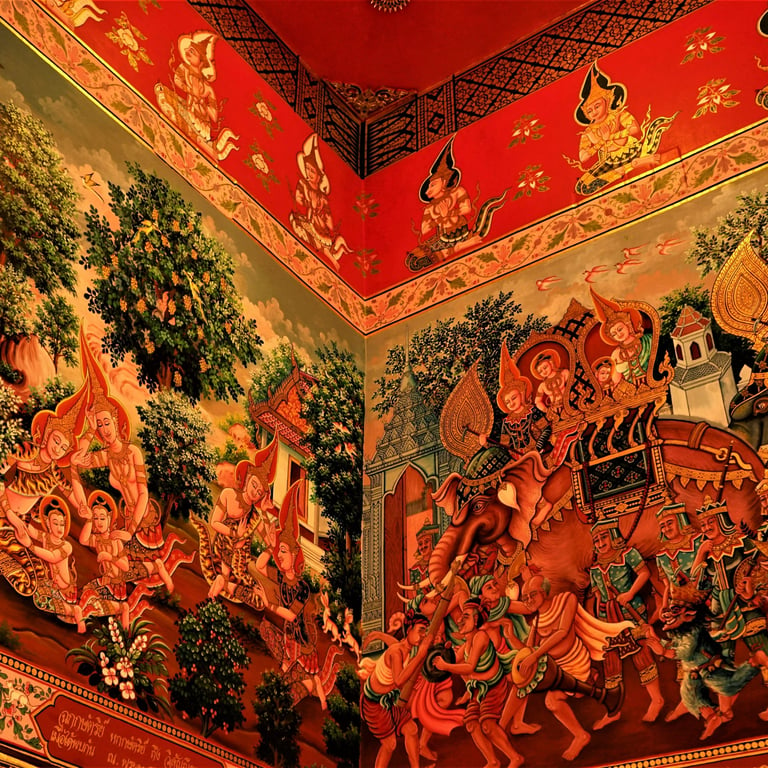Wats up
Wats abound in Thailand, you will find them throughout the village, town or city. As the historical focal point of the community, they will often be the remnant of the locale's small beginnings. Some newer ones are architecturally spectacular, and well worth the side-trip for the visual feast alone. You need to do your research to find the most photogenic. Just ask around if you get the chance, the most famous wats are commonly known amongst Thai people, often from news features over time, or simply from recent reels on their phones. Here are some examples.
Wat Tham Seua, Kanchanaburi
Tiger Cave Temple
The Wat Tham Seua complex south of Kanchanaburi is truly impressive. The toy-town funicular leading up to its base level suggests that your climbing is over - not so - many more steps await you. This shot looks like it was taken by a drone, but it wasn't, it was taken out of the window on the seventh floor of one of the towers. That's a lot of steps. There once was a tiger in a cave, but I guess that was a long time ago, as is the case with several other 'tiger cave' sites in Thailand.
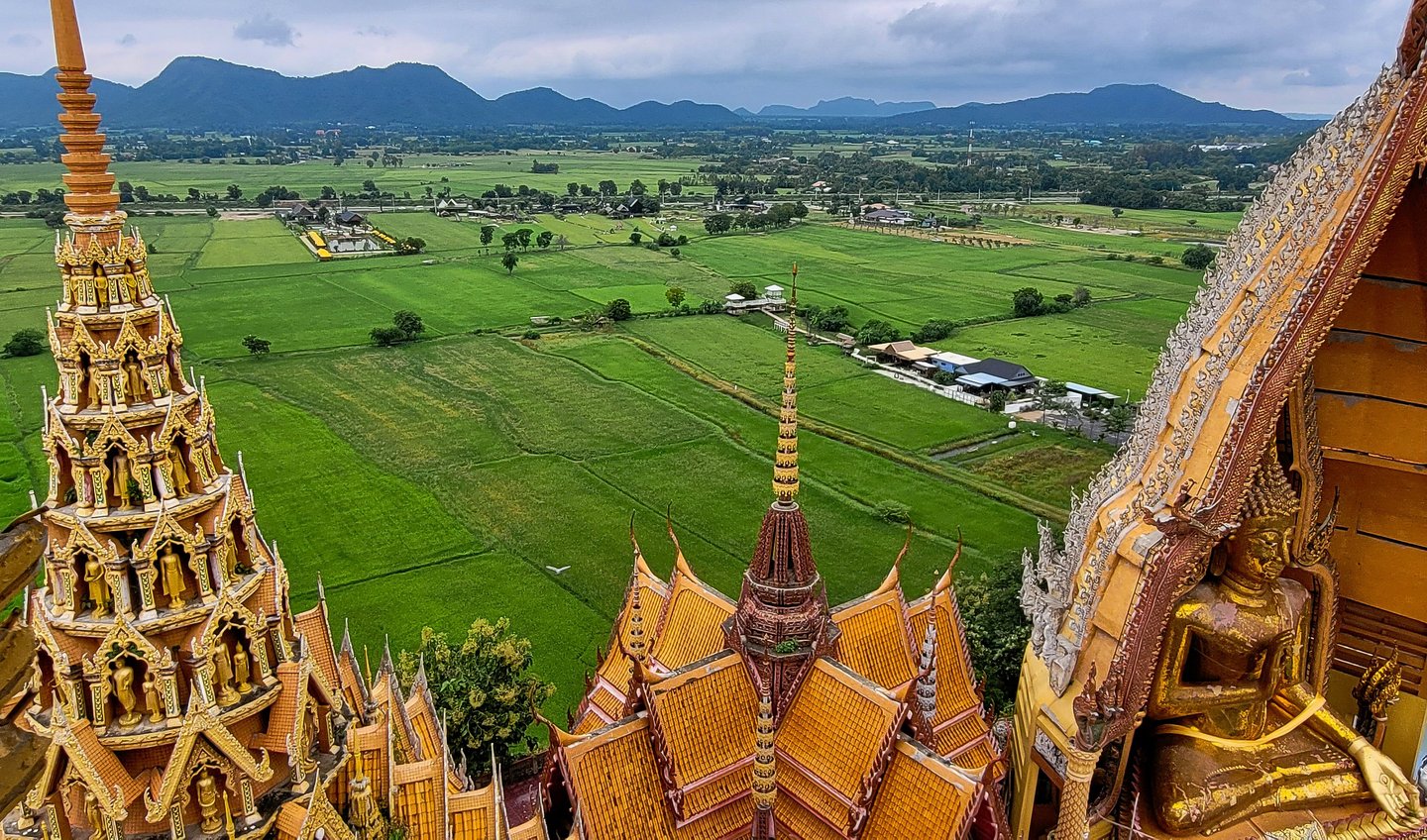

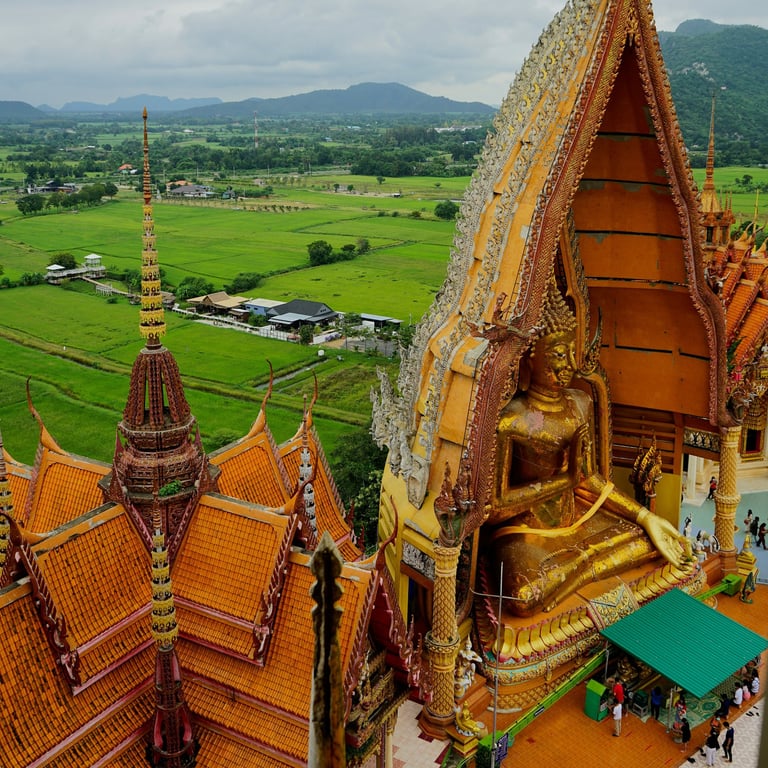

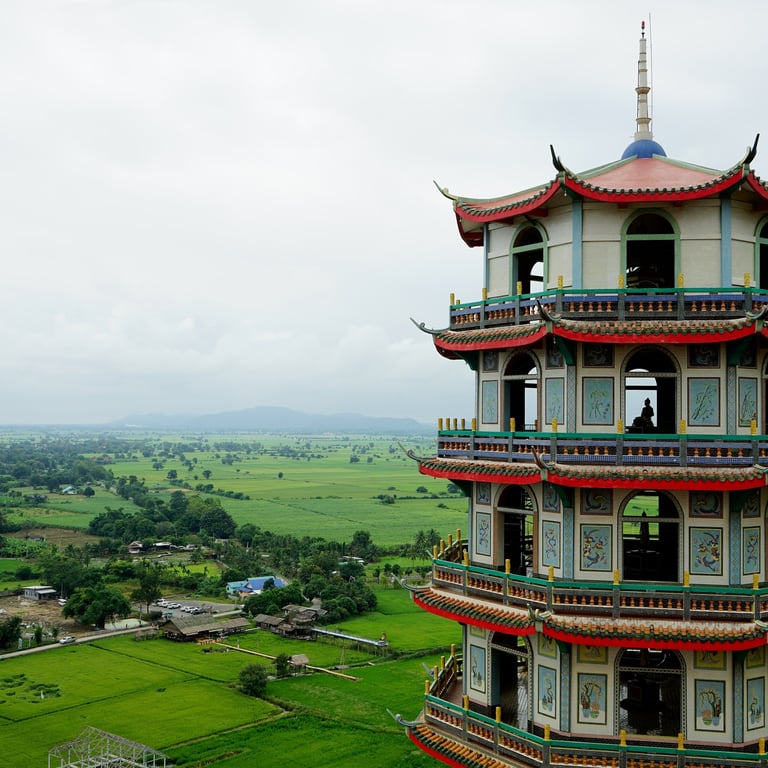
Wat chaloem phra kiat, lampang
Temple of the Floating Pagodas
You can see the Temple of the Floating Pagodas from miles away. The white stupas are lined up on promontories along a high mountain ridge. As you get closer you realise that if you frame the pagodas to include the highlands, they will just look like white dots and the image will not do them justice. They will look like they are floating though. Once you’ve taken the baht-bus to the base, there is a sweaty 30-minute climb up the wooden steps to get to the top. The views are great as you lean over the fence next to the sign that says don’t lean on the fence. Question: if you read a sign in a language you can’t understand, have you read it? Technically yes, but no consolation as you fall precipitously into the void. In Hokkaido the ‘Beware of the Bears’ sign in Japanese has a picture of a bear on it. Yo!
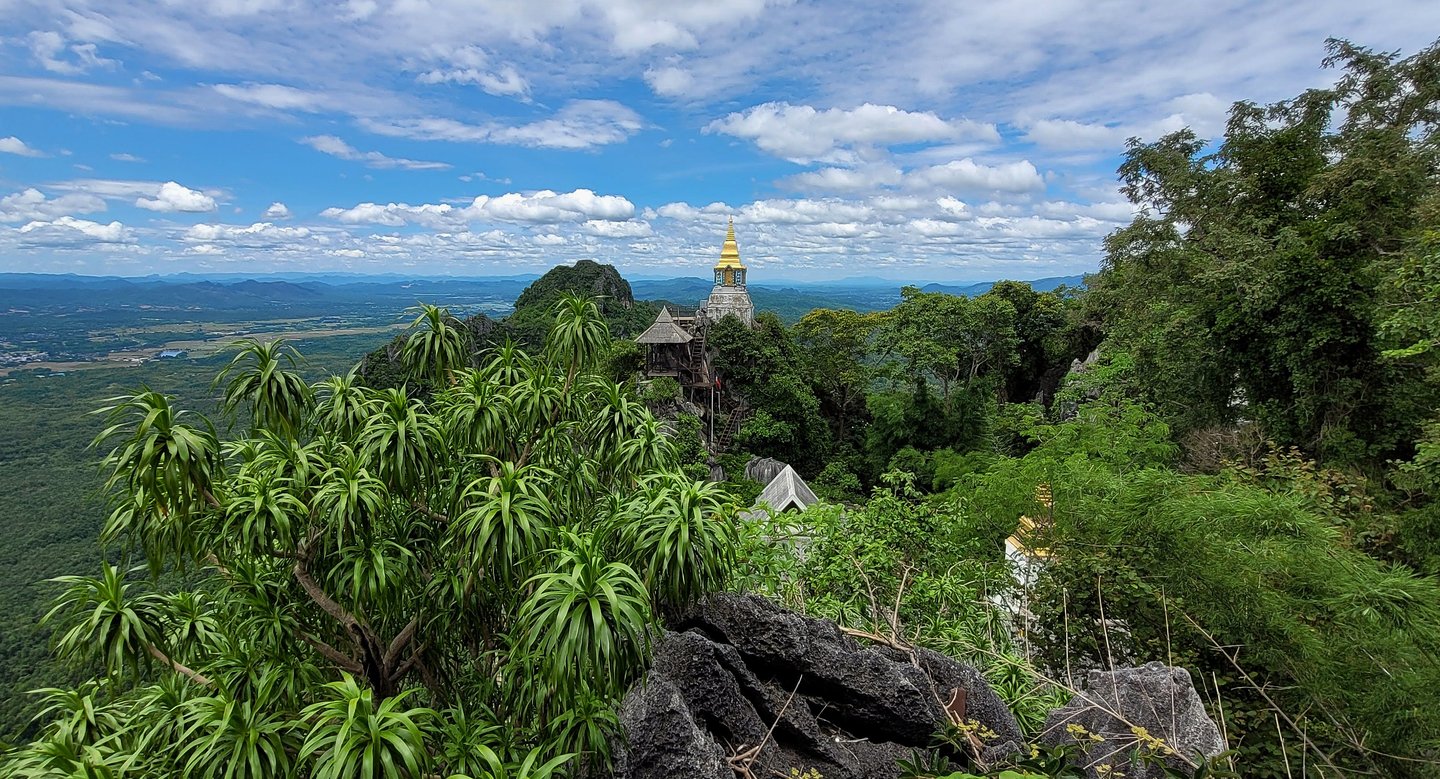

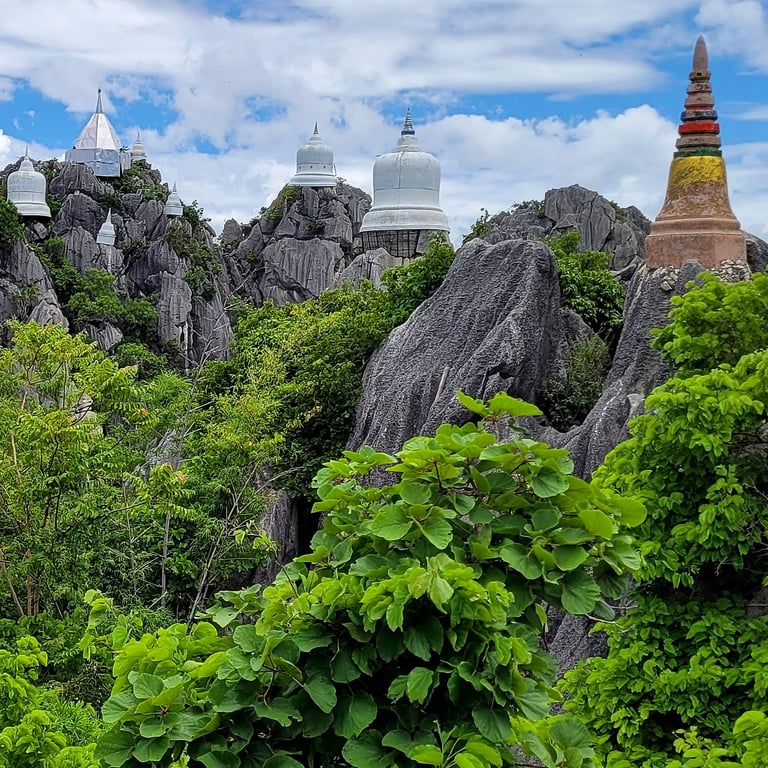
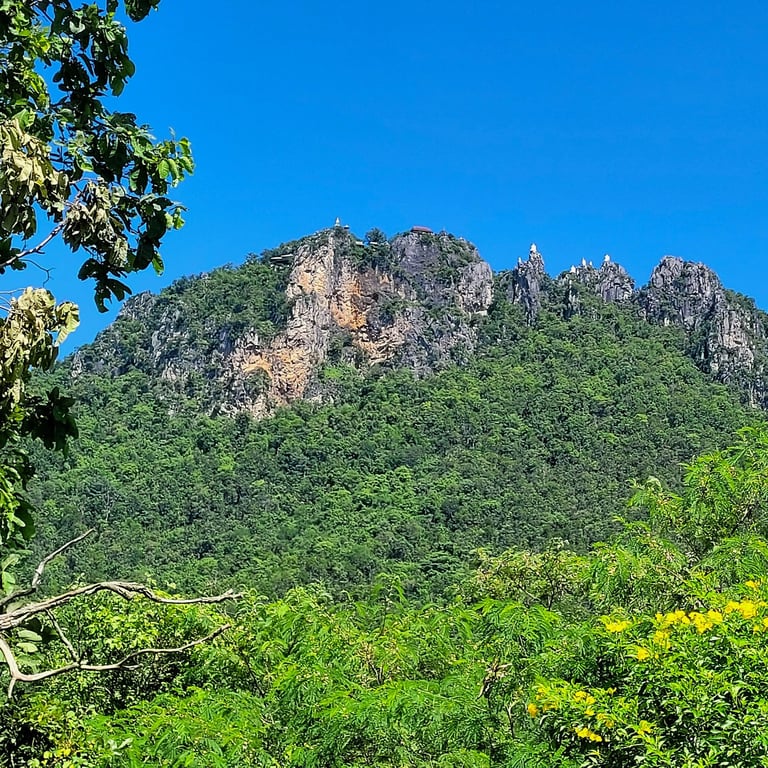
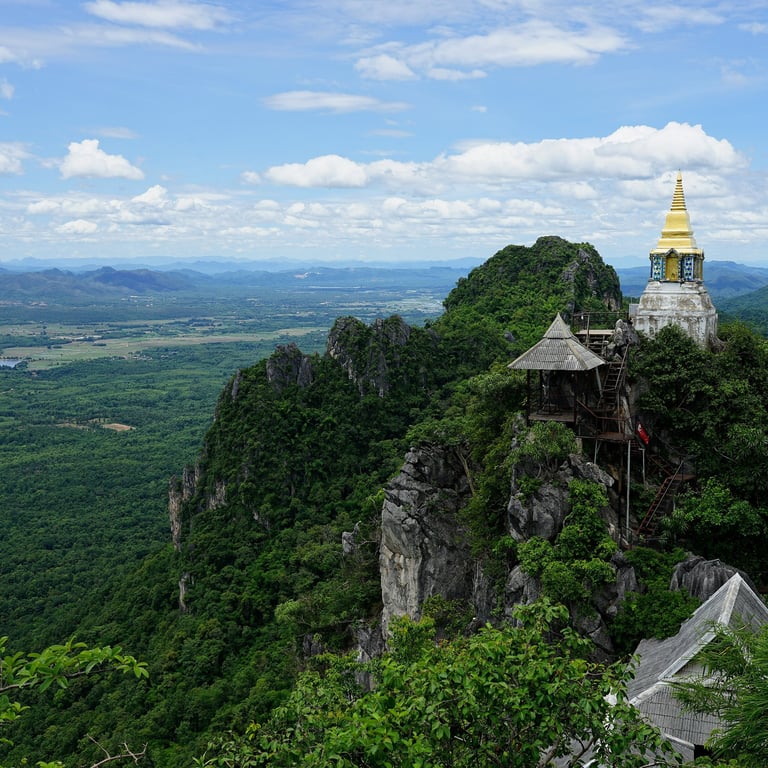



Wat sirindhorn wararam, ubon
The Wat That Glows
Sometimes when you see threatening clouds in the distance you wonder if a storm is heading your way, on this occasion it was dead obvious what was in store. It certainly adds to the atmosphere as leaves suddenly start swirling and the sky darkens well before dusk. Huddled under a traditional-build shelter, the crowd enjoyed a recurring theme at places of worship – a leaking roof! The ensuing royal soaking made sure that wet fingers skidded across a wet phone screen rendering photos nigh on impossible. The intended highlight of the trip, the luminous patterns, just about prevailed in the murky elements. So, the one hour drive back to Ubon Ratchathani in the dark with wipers on ultra certainly concentrated the mind.
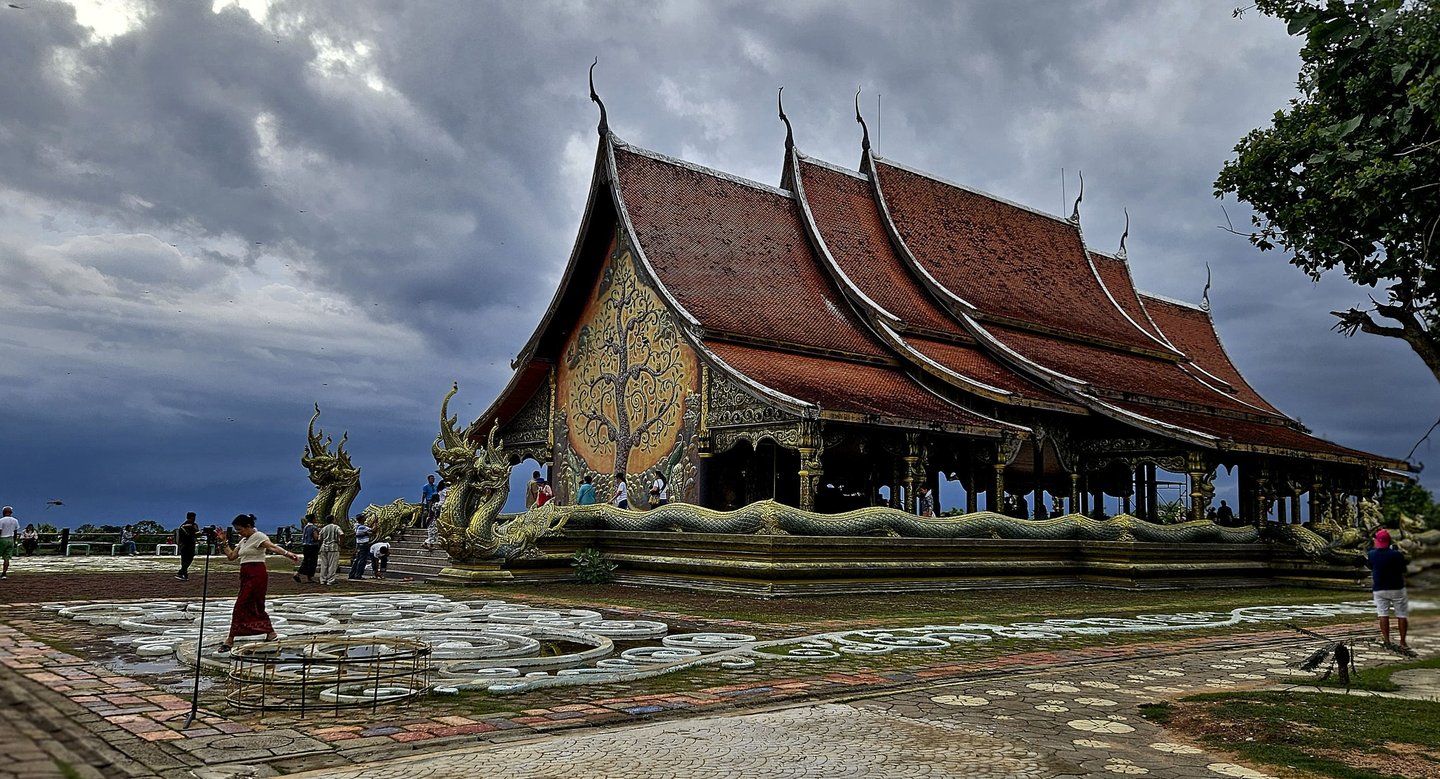




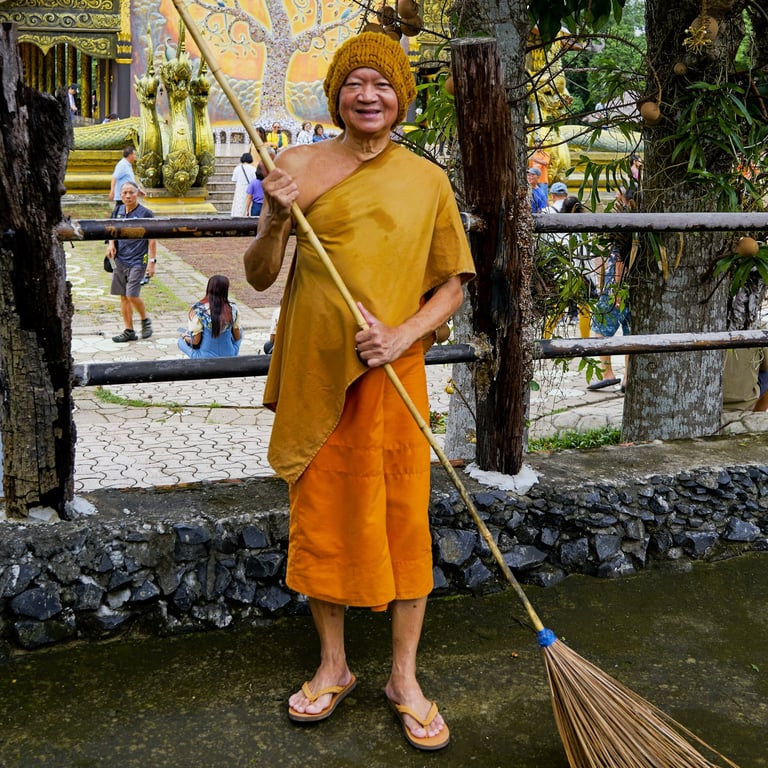
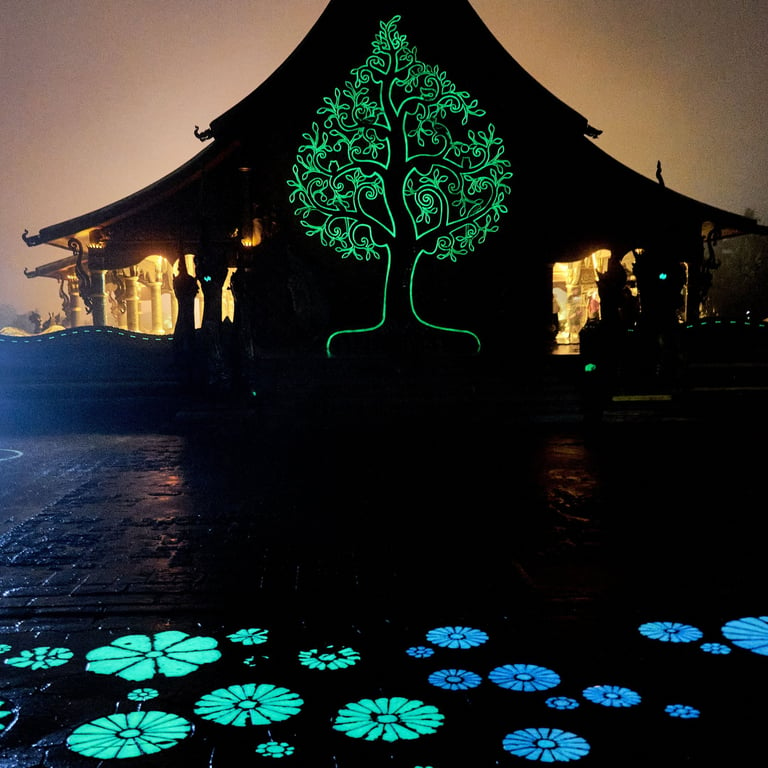
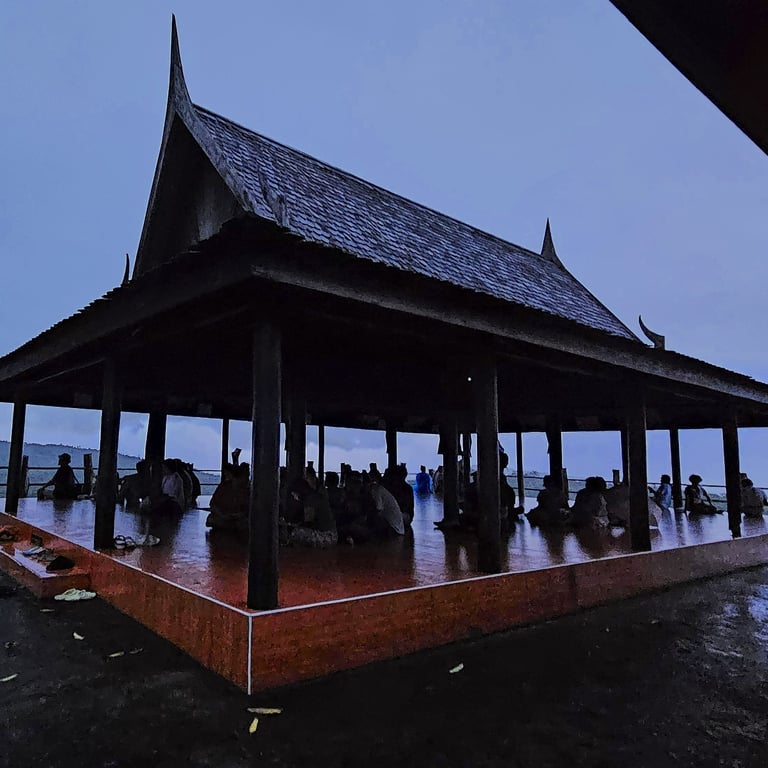
Wat thap kradan, suphanburi
The Shrine to Khun Pueng
The shrine at Wat Thap Kradan dedicated to the legendary singer, Phumphuang Duangchan (Pueng), has people making a pilgrimage from all over the country. A cult has grown up whereby many believe that good fortune comes to those who pray to her spirit, especially regarding coveted lottery numbers. Pueng touched the nation’s heart-strings after dying aged 30 from lupus. Her tragic life of a manipulating family and managers, played out in public and was clearly relatable, thus elevating her status well beyond the regular. The music is called Luk Thung, a Thai country-style which resonates particularly with the largely rural population. Most of the artefacts in her shrine, such as shoes she wore and stage outfits, were red in colour, but videos online of her performing show her in anything but red. Perhaps a power-luck thing?
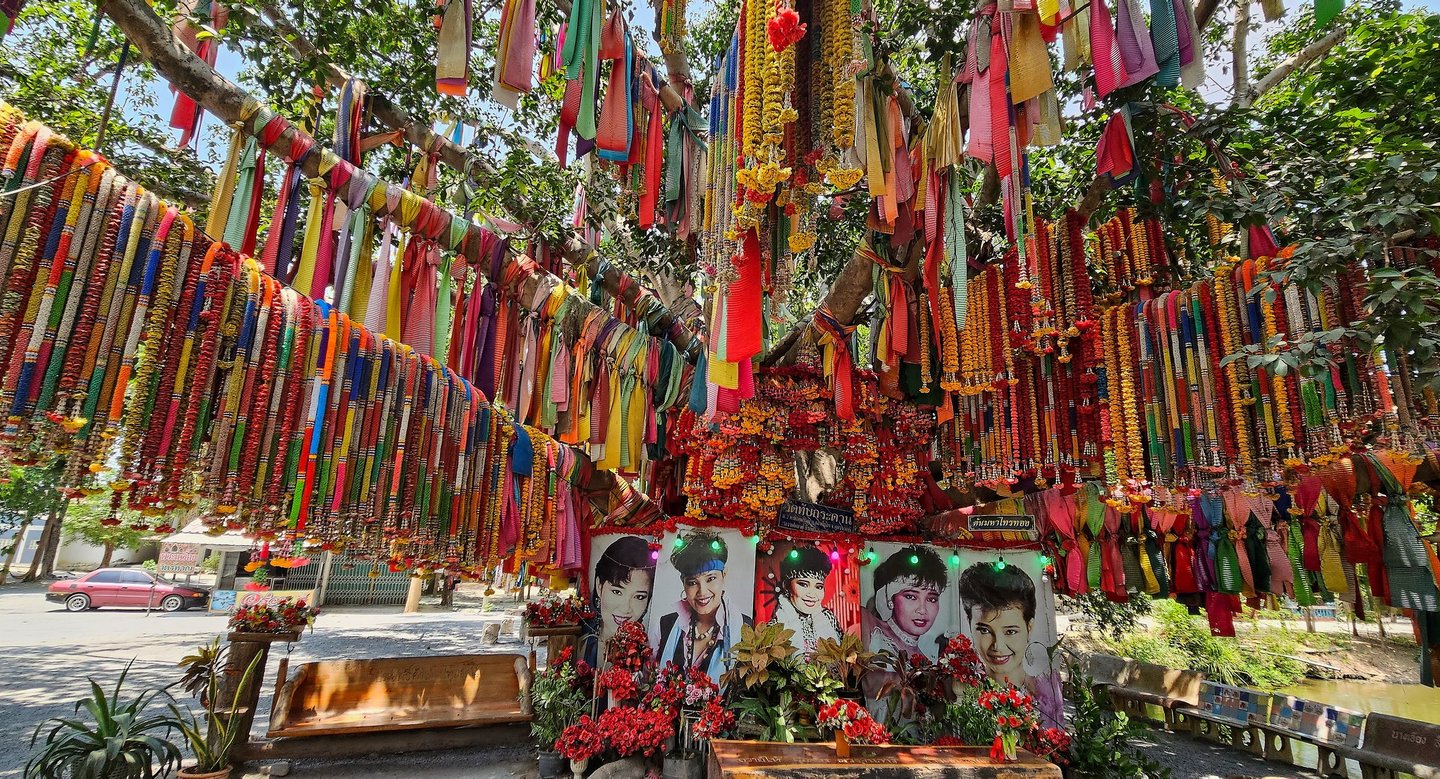




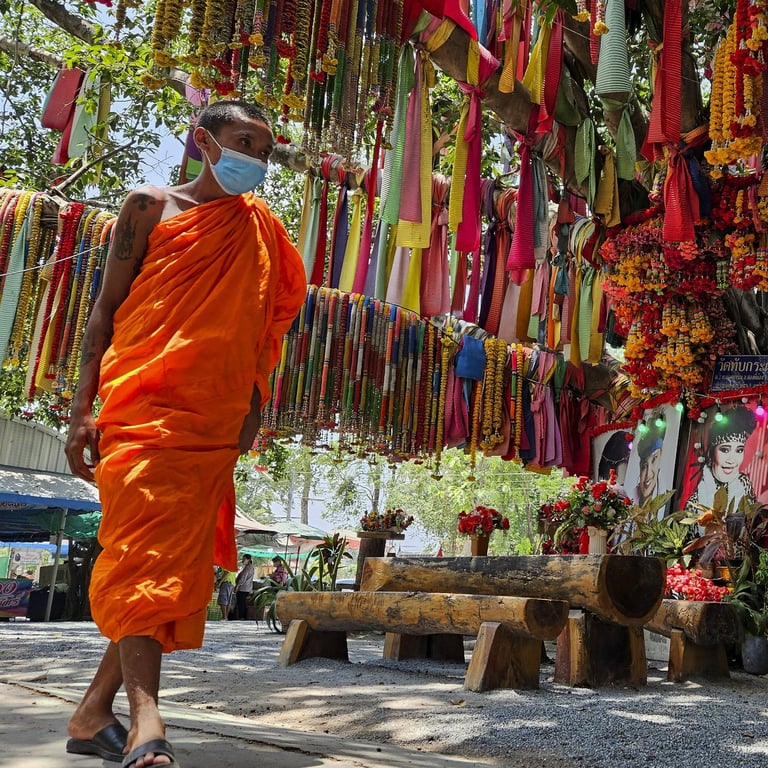
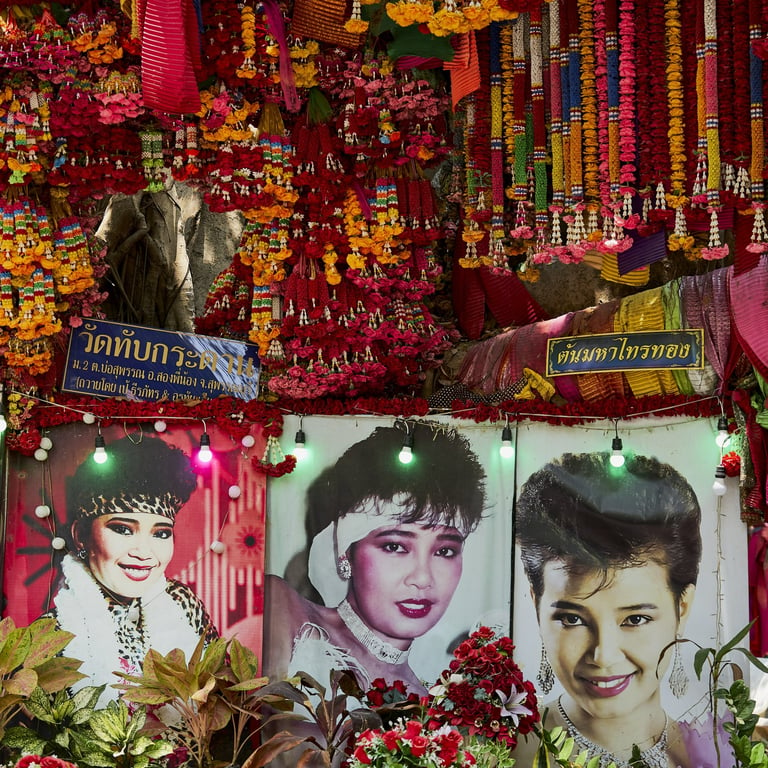
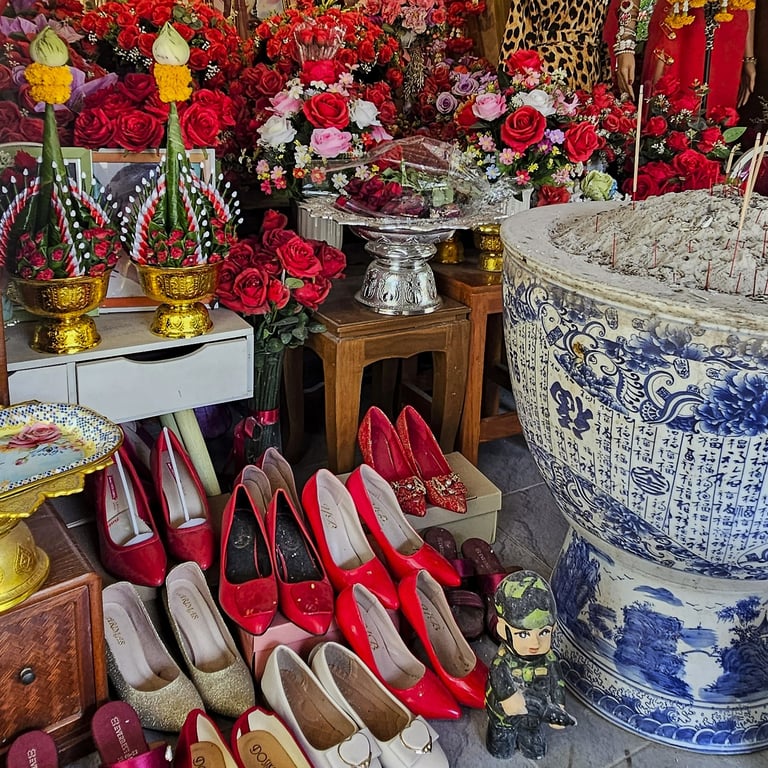
Wat phrathat pha sorn kaew, phetchaburi
The Temple on the Glass Cliff
Wat Phrathat Pha Sorn Kaew (Temple on the Glass Cliff) in Petchabun Province is another of those huge wats that you can see from miles away, right across the valley as you wend your way towards it. When you get there, you see that it is five seated Buddhas nested in lotus position. Apparently, it represents the five Buddhas that have visited earth. It is a fairly new wat, only begun in 2004, and very photogenic for its uniqueness - every angle will attract your lens. Once there you are on the threshold of Loei Province and one of the national parks will likely be your next stop.
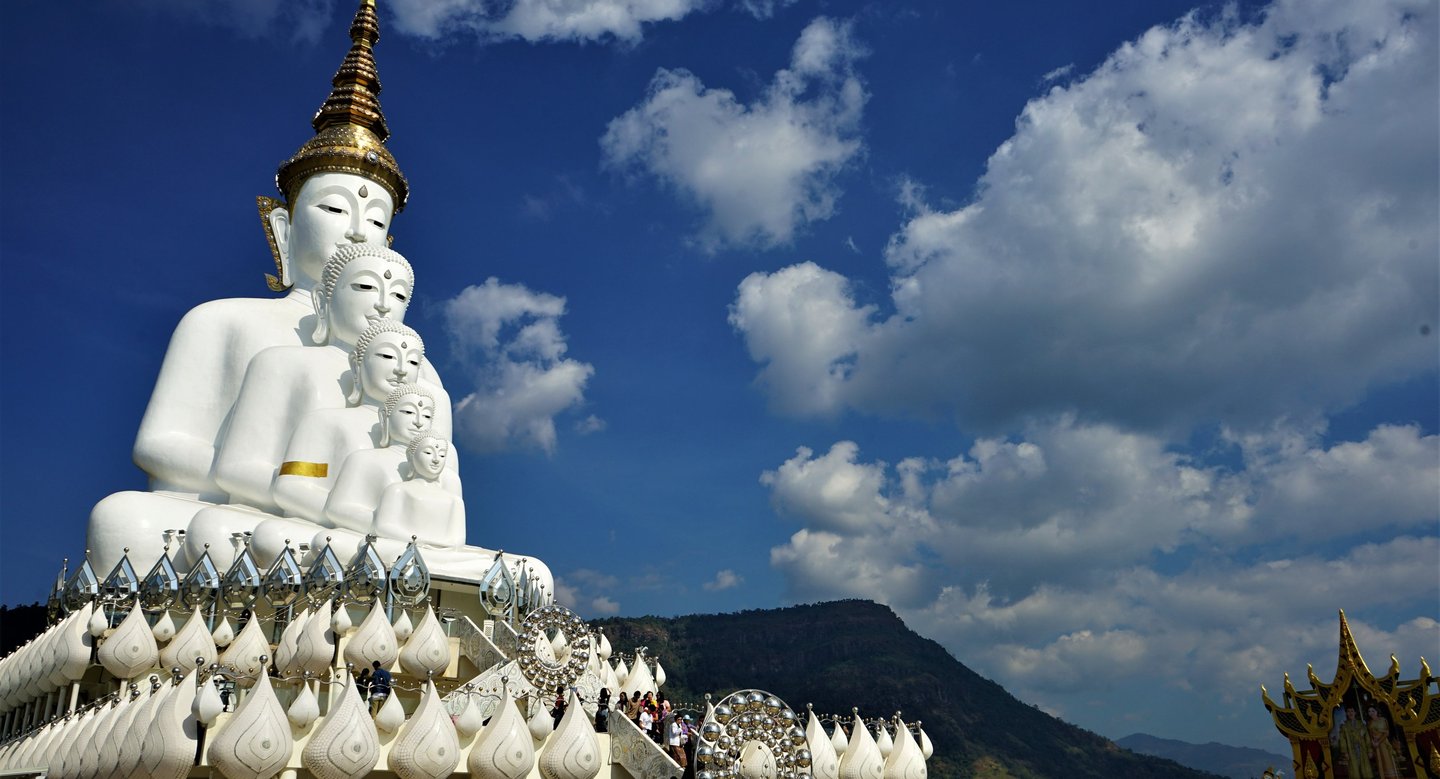

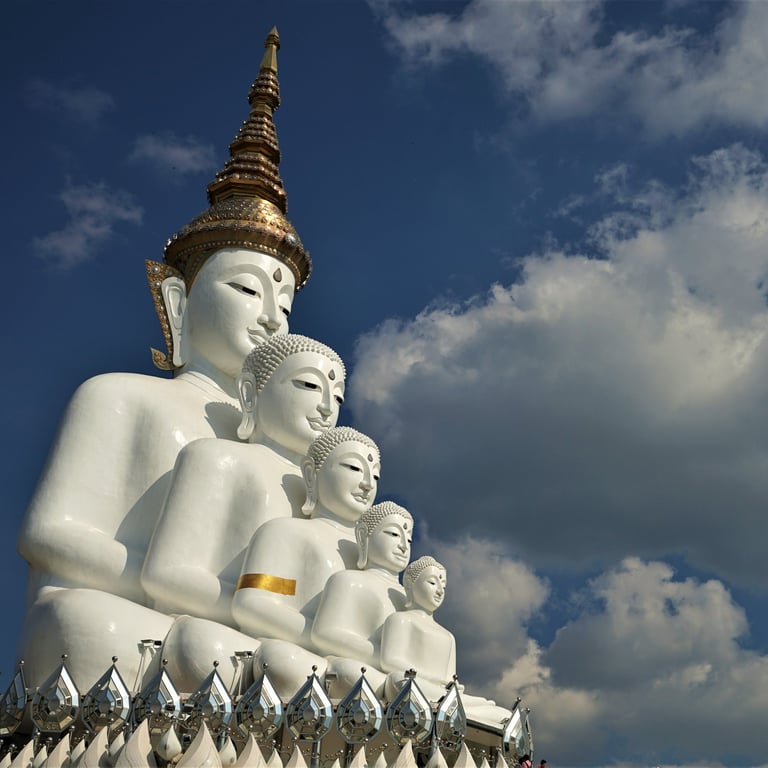
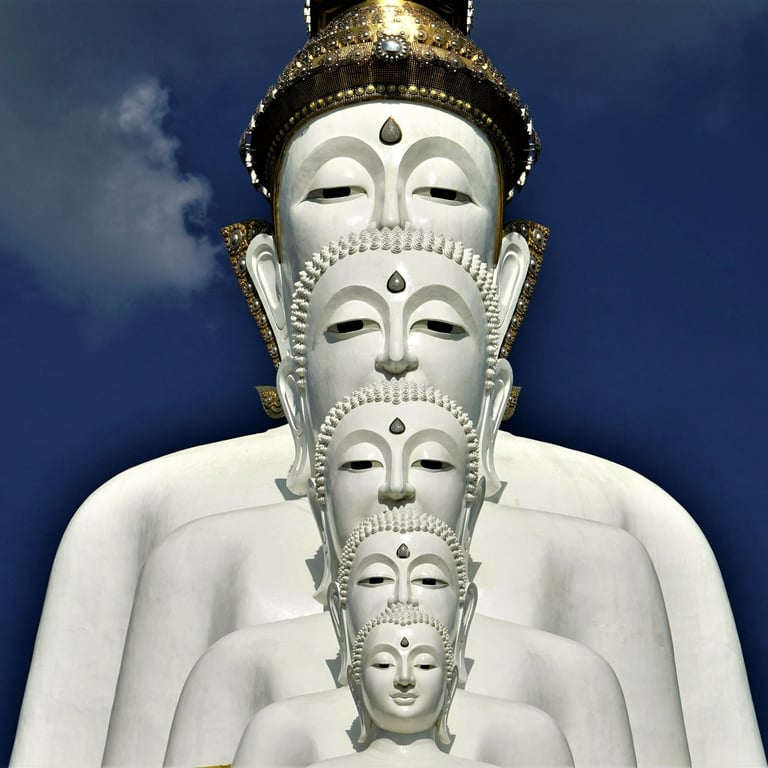
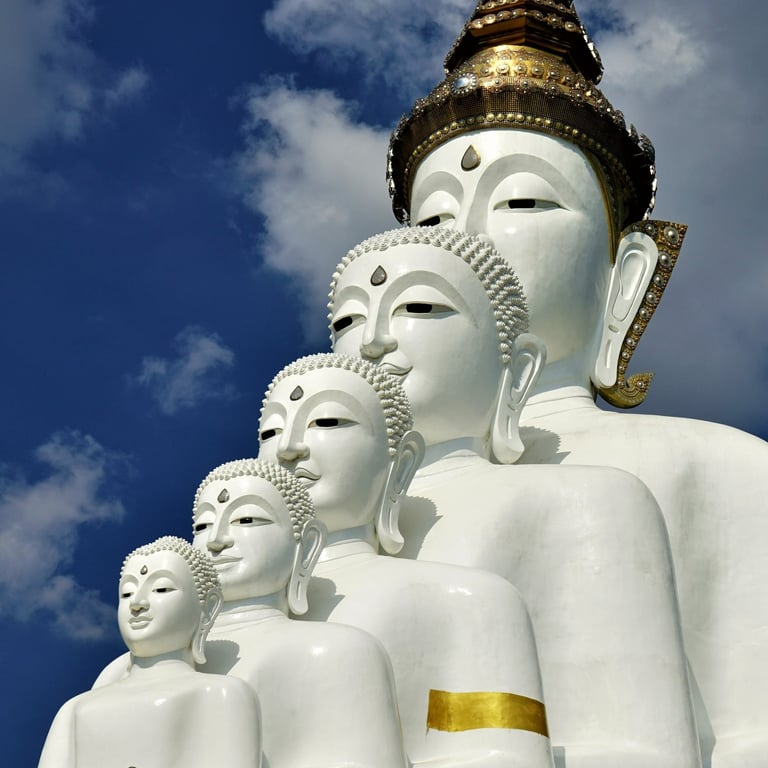
Wat rong suea ten, chiang rai
The Blue Wat
The Blue Wat in Chiang Rai is like walking inside a large blue see-through sweet wrapper, albeit a richly embroidered one. Everywhere you look your eyes just see blue, even the white Buddha is backlit with blue light. These three monks were wondering how to do a selfie, contorting this way and that to get themselves and the Buddha in the frame. I offered to take a shot for them and was proffered their three mobiles one after another, followed by one for myself. To elicit a smile for the camera we say, ‘Say cheese’. Guess what? It is also the same English word in Thai as there is no Thai equivalent.
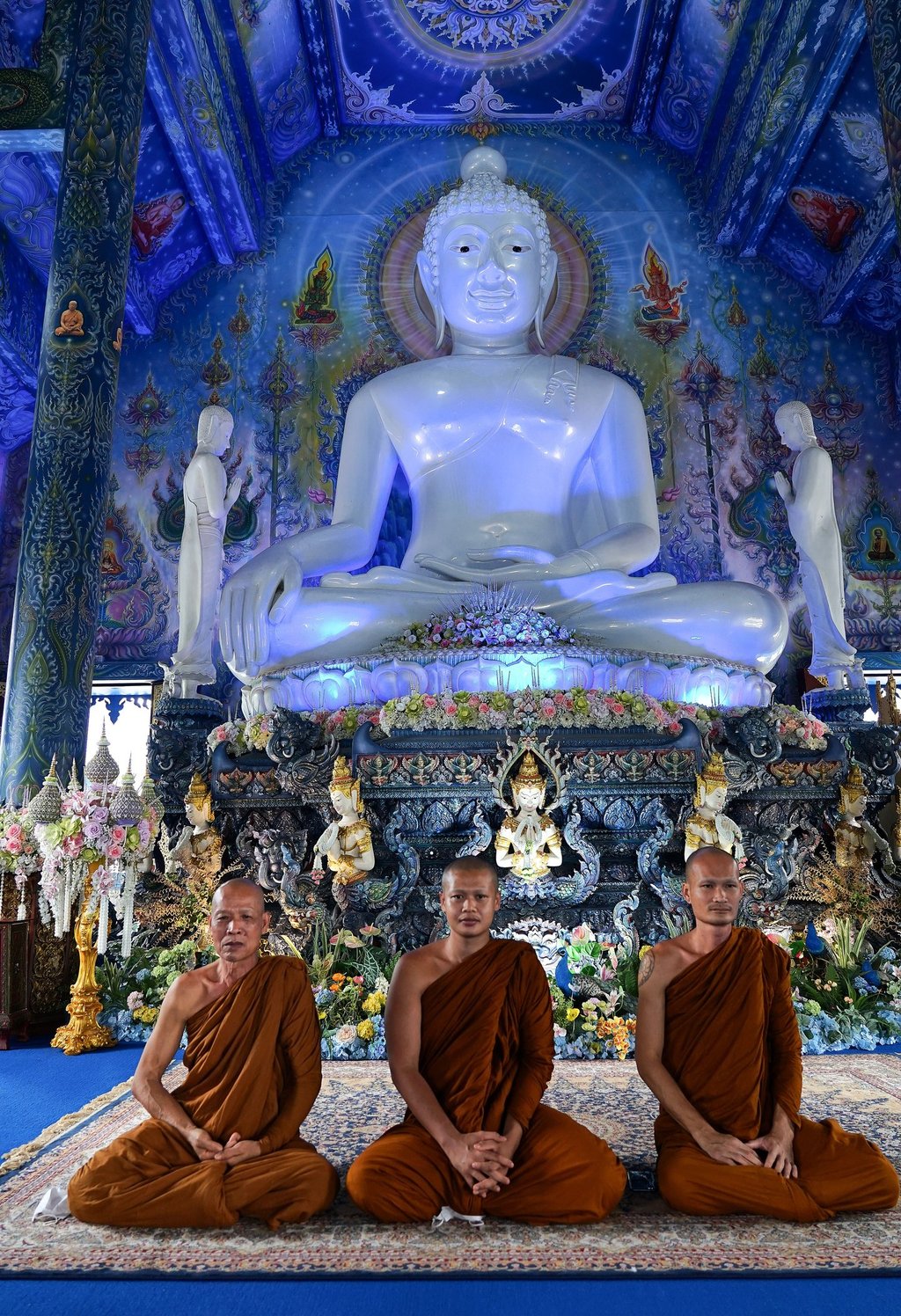

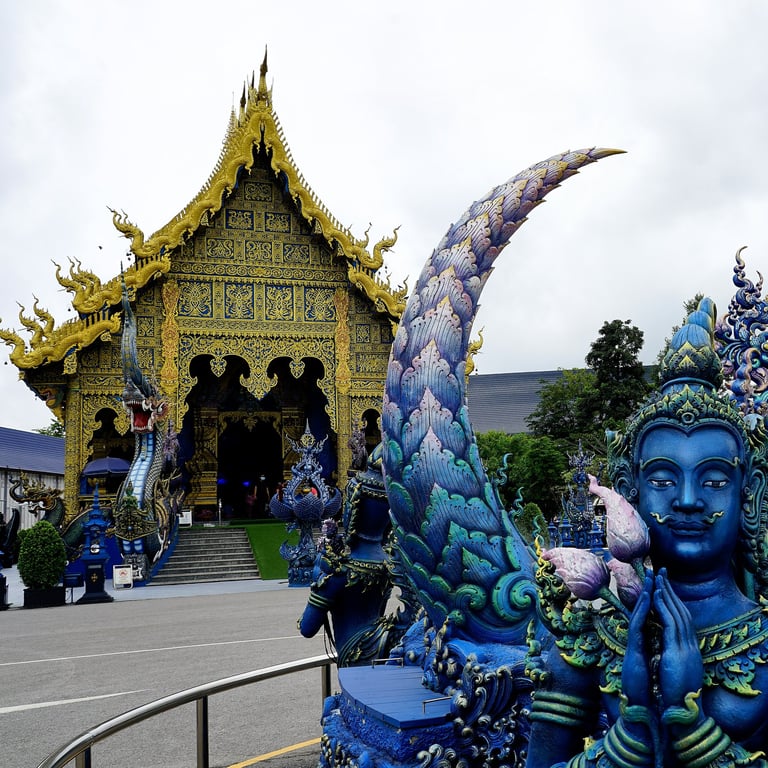
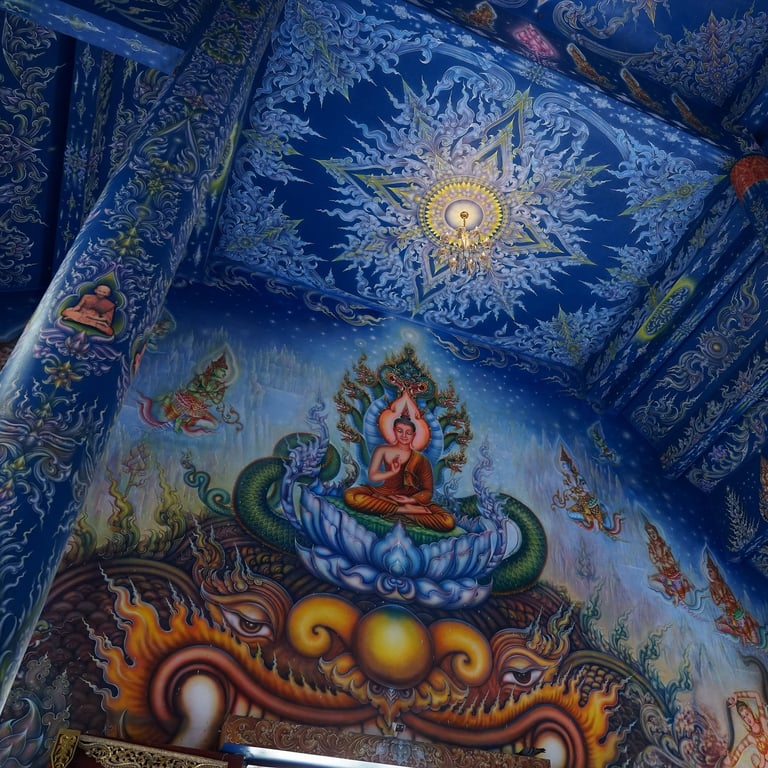
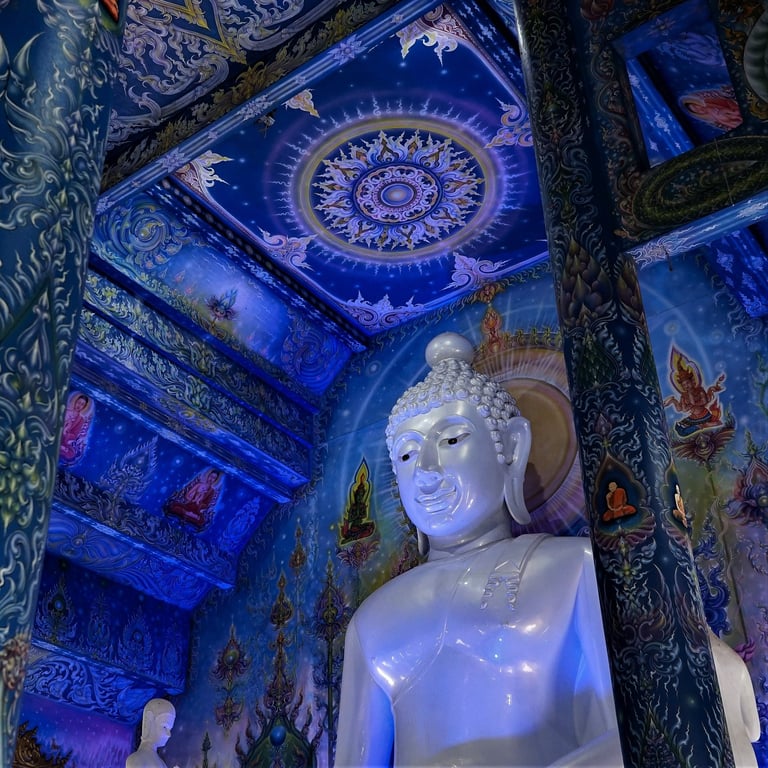
Wat khao angkhan, buriram province
Rust all around
This wat in Buriram Province is on top of an isolated hill in a red sandstone area. It has fairly distinctive grounds, everything being a rust colour, but its upkeep takes away from the overall effect. This is often noticeable in country wats where it is clear that the budget just doesn’t take care of the day-to-day maintenance. Whilst the royal wats in Bangkok are immaculate, freshly painted and not a brick or tile out of place, many of their countryside juniors are languishing rather. At this wat a key feature is the large reclining Buddha with a big shade over it like a football stand. When I was there a storm had flattened the cover which lay on top of the Buddha. I wondered how long it would be before it was fixed?
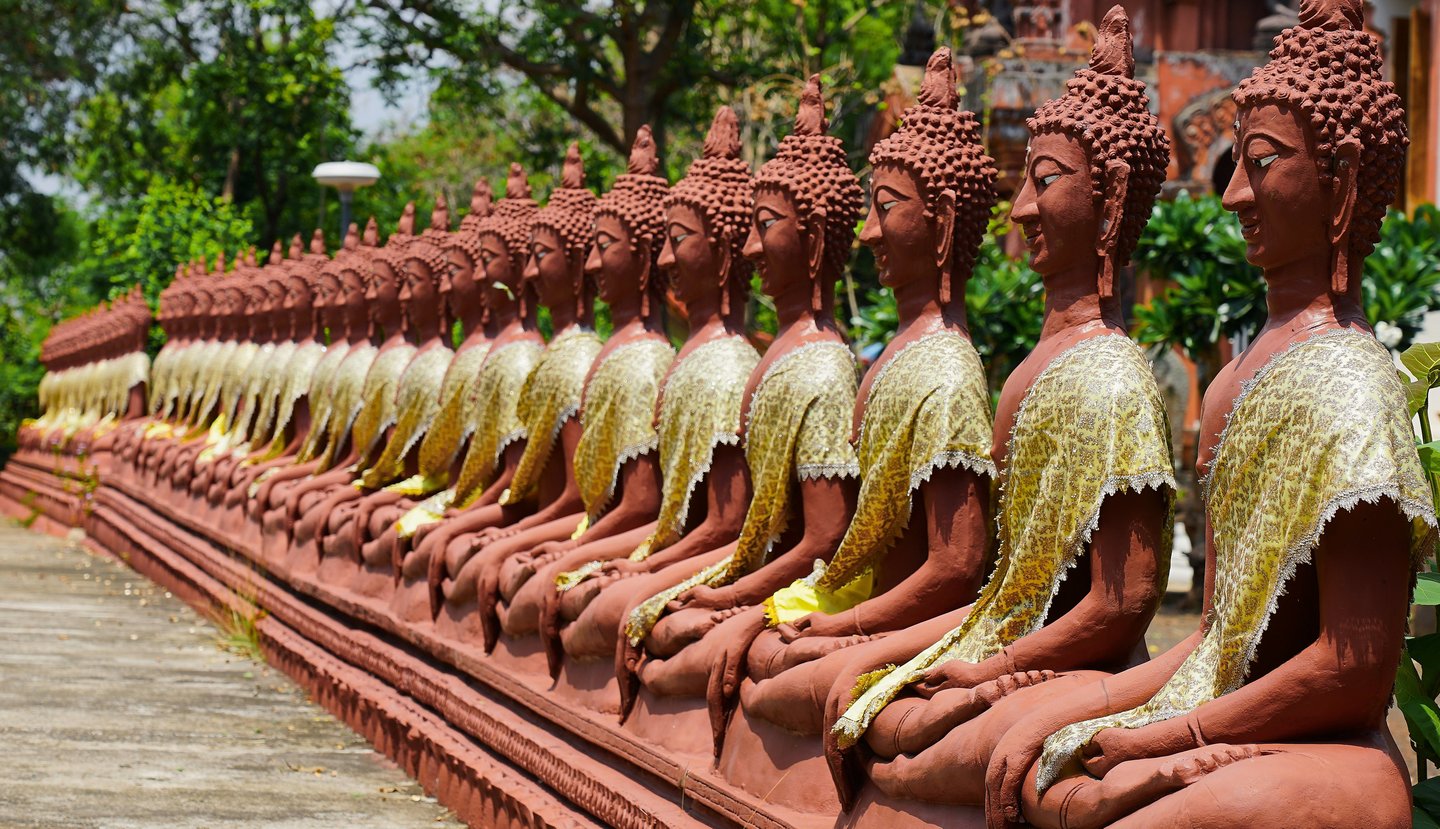

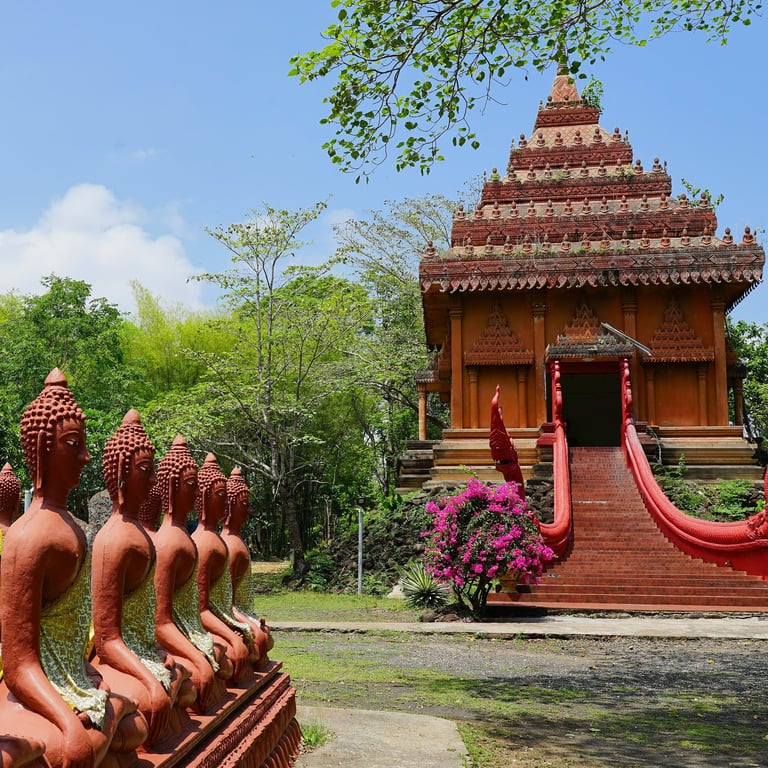
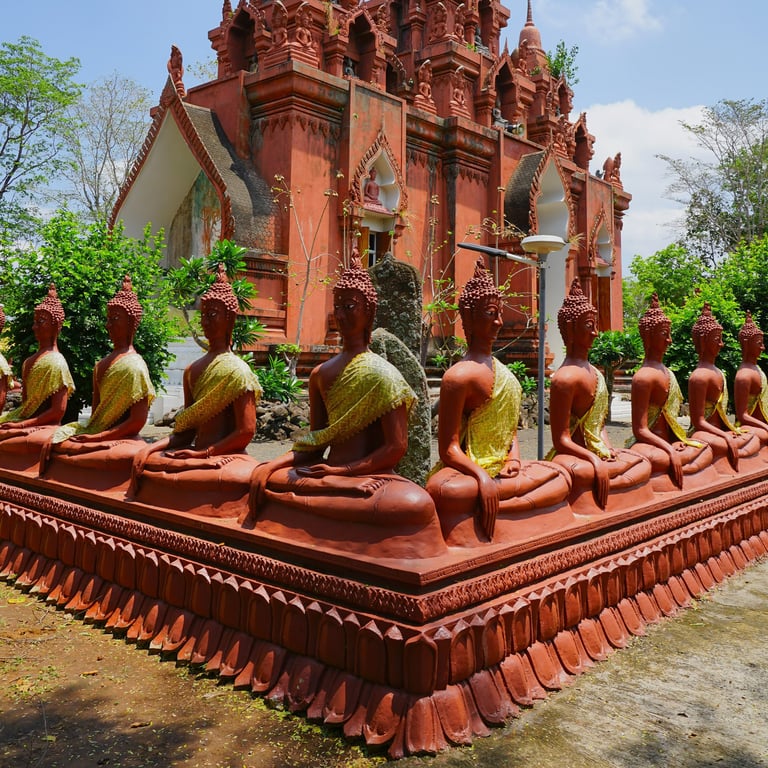
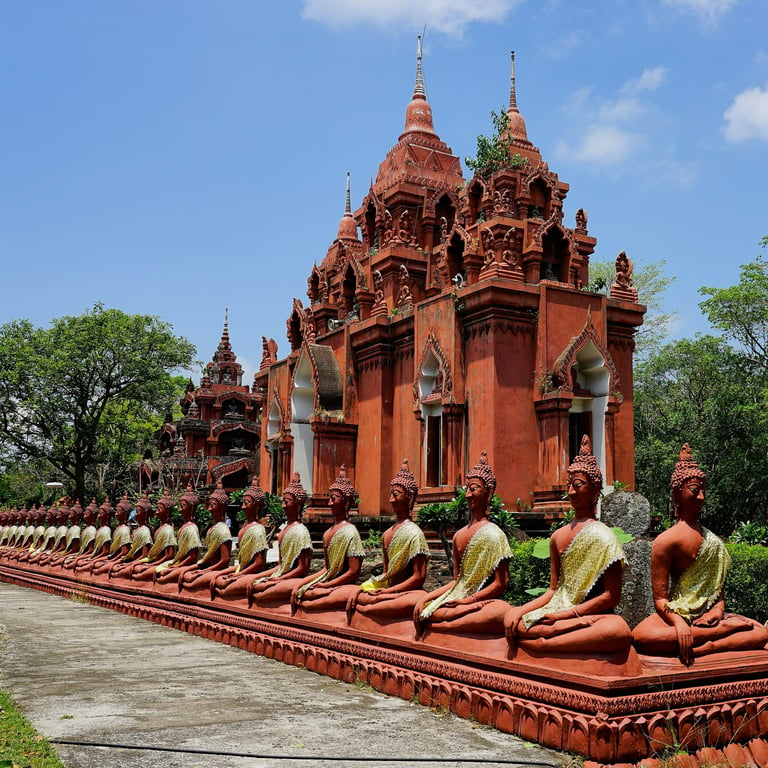
Wat pa ban tat, udon thani
Black and white
This is another of those wats whose setting can be described as majestic. Everything about it is precise: spotlessly clean, beautifully proportioned and strikingly designed. This is the first time that I have seen a wat that is essentially black and white themed – unusual, but it works. The wat was founded by the nationally famous monk, Ajarn Maha Bua who died in 2011 and is said to have attained enlightenment and will no longer return to earth. There is quite a reverent atmosphere around the place with people talking in whispers as they set off from the entrance. I was politely requested to hitch my shorts down to cover my knees. This was no issue at all as they naturally tend to migrate that way without prompting. And let’s face it, elderly knees are rarely an uplifting sight anyway.
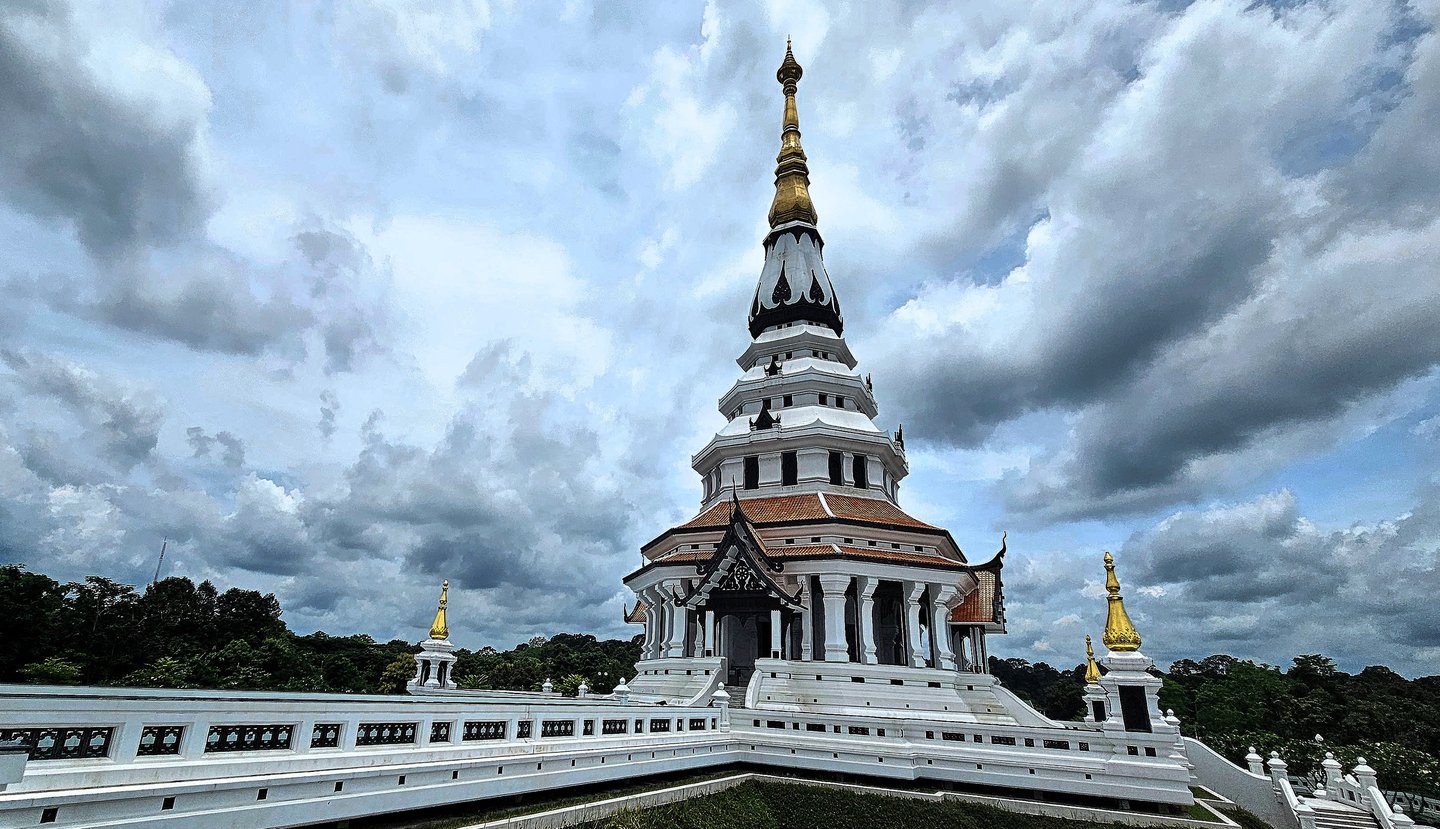

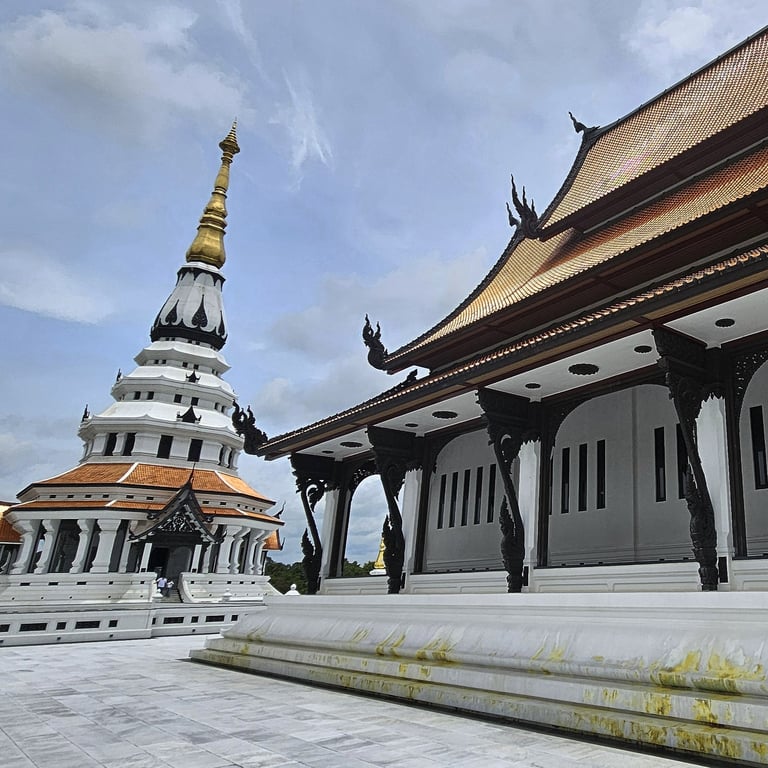
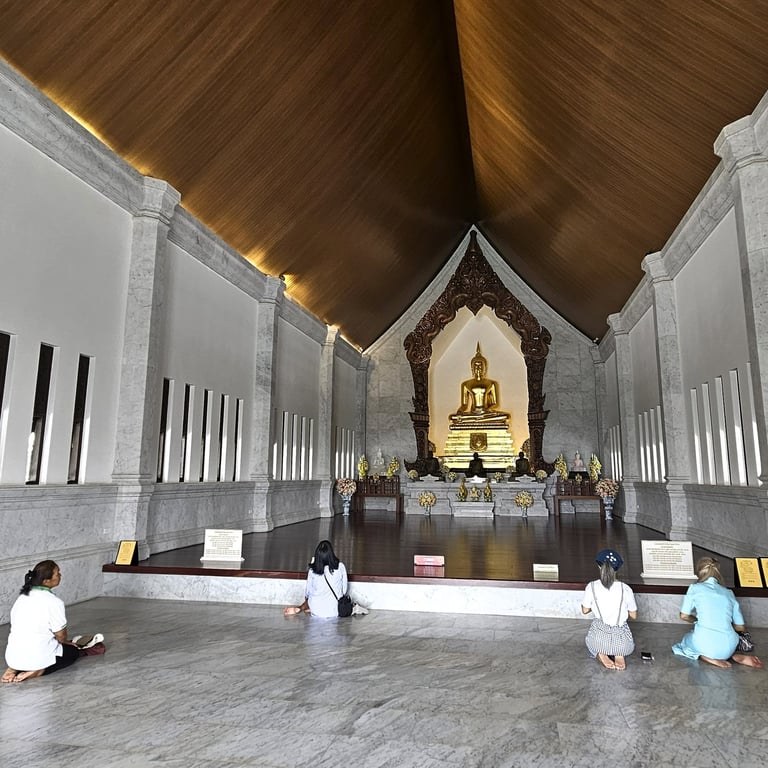
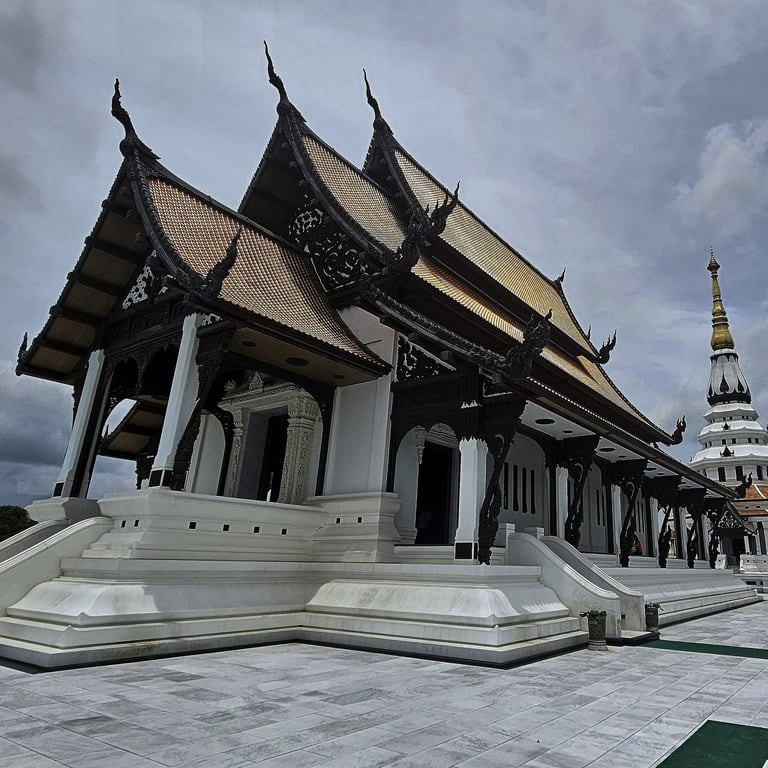
Wat khao tabaek, chonburi province
A world of prayer ribbons
I can imagine a committee meeting where they took a vote and agreed to offer coloured ribbons at the wat entrance for devotees to write their wishes on, before tying them to a tree or pillar. For a fee of course. What a winning idea that turned out to be! The wat and steep approaches are festooned with prayer ribbons, such that there is scarcely anywhere left to affix your offering. I am guessing that the wat upkeep finance account is in good shape. Must be - they've built an elevated glass walkway now. This wat is only a thirty-minute drive away but in an obscure location; I found it while casually browsing google maps and scrolling down its reviewers’ ratings; a quick way of pinpointing local places of interest.
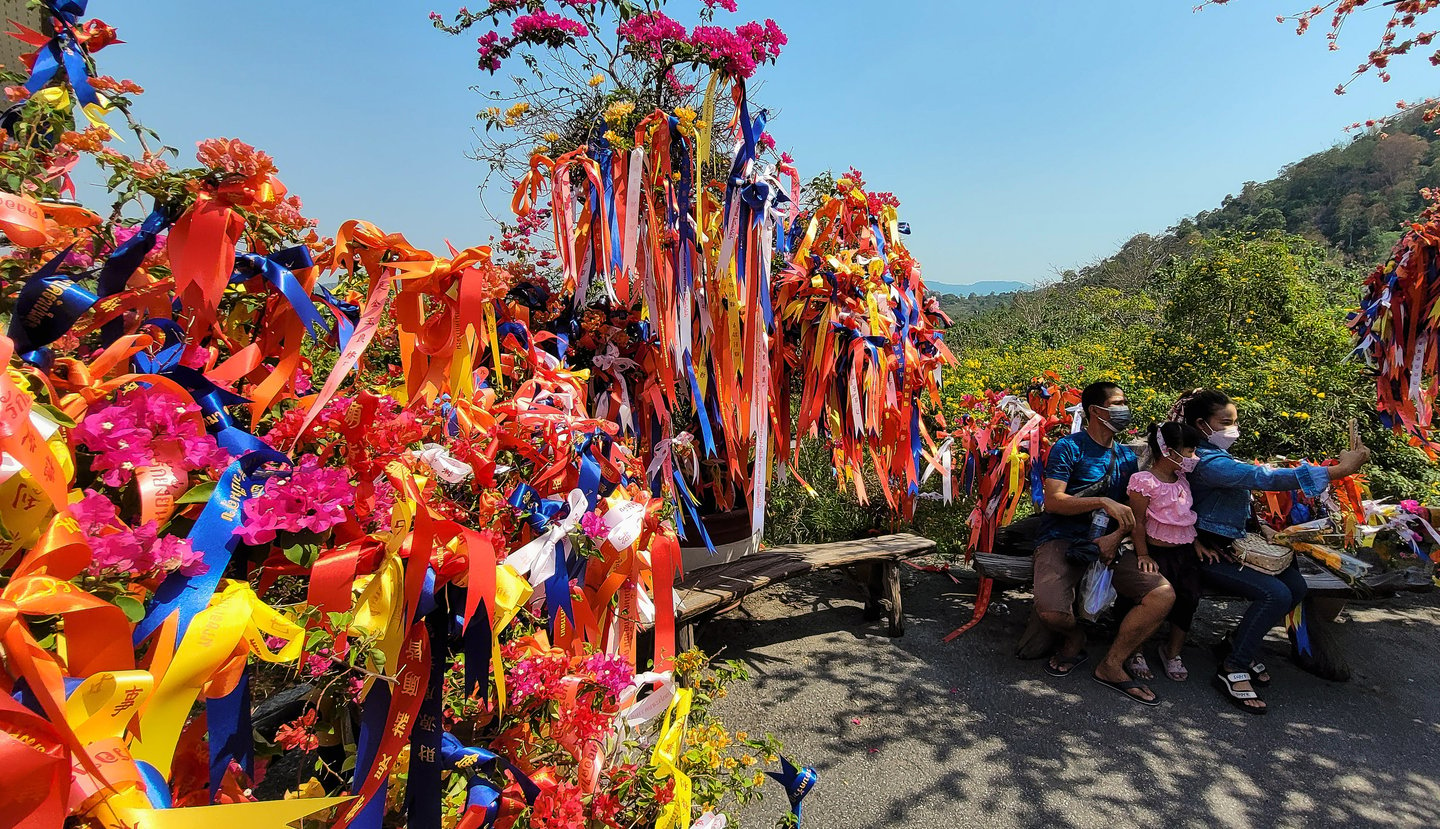

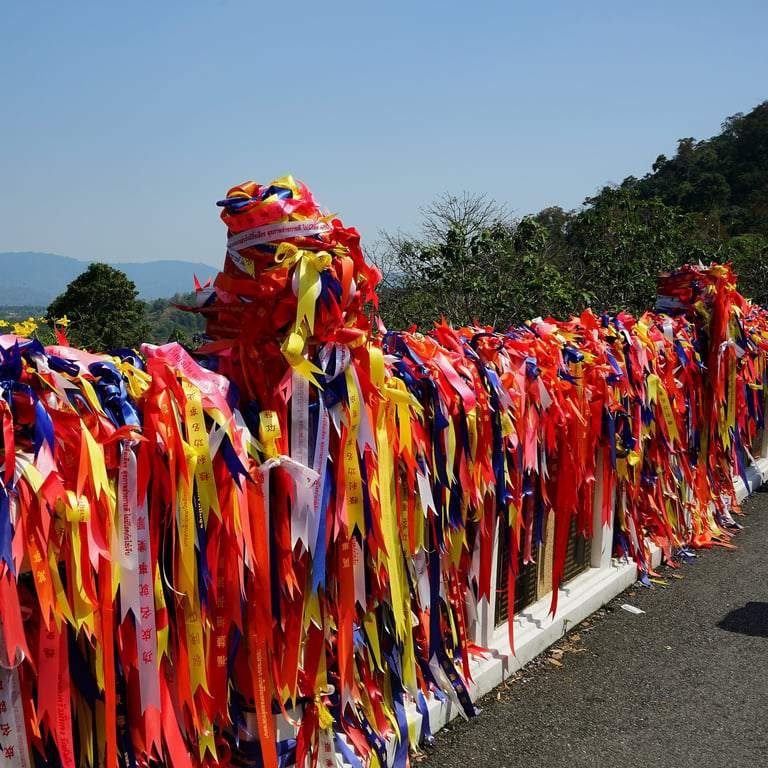
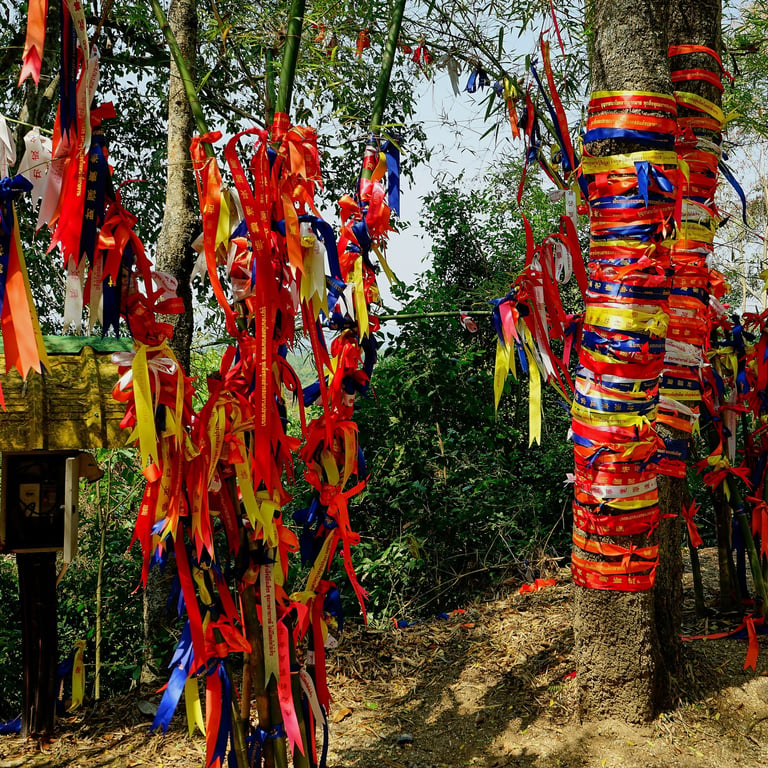
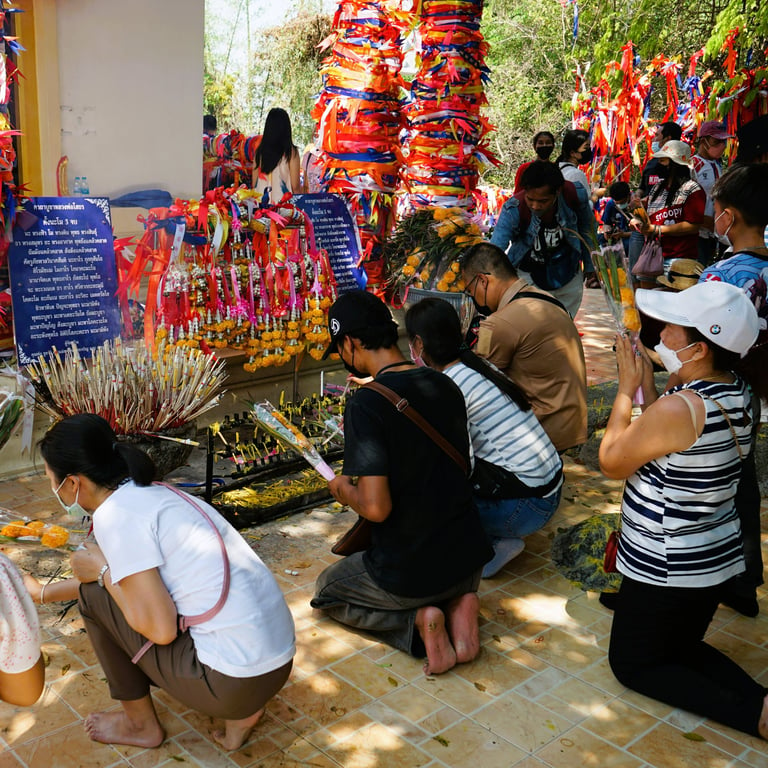
city pillar, bangkok
City pillar for luck
City Pillars in Thai towns mark the original settlement centre. This one attracts crowds, particularly at the beginning of the new year, in order to make merit and pray for good fortune in life. Amongst the rituals, devotees say set prayers while tying a silk scarf round a replica pillar or presenting garlands in front of one of the shrines. There are queues as people line up to take part, so it doesn’t take long before the garlands pile up and the scarves envelop the pillars. Attendants therefore regularly take away the offerings in their trolleys. Round the back I noticed a group of ladies re-folding the scarves and refreshing the garlands to be recycled and used anew. A regular operation behind the screens ensures that the constant stream of folks is well supplied.
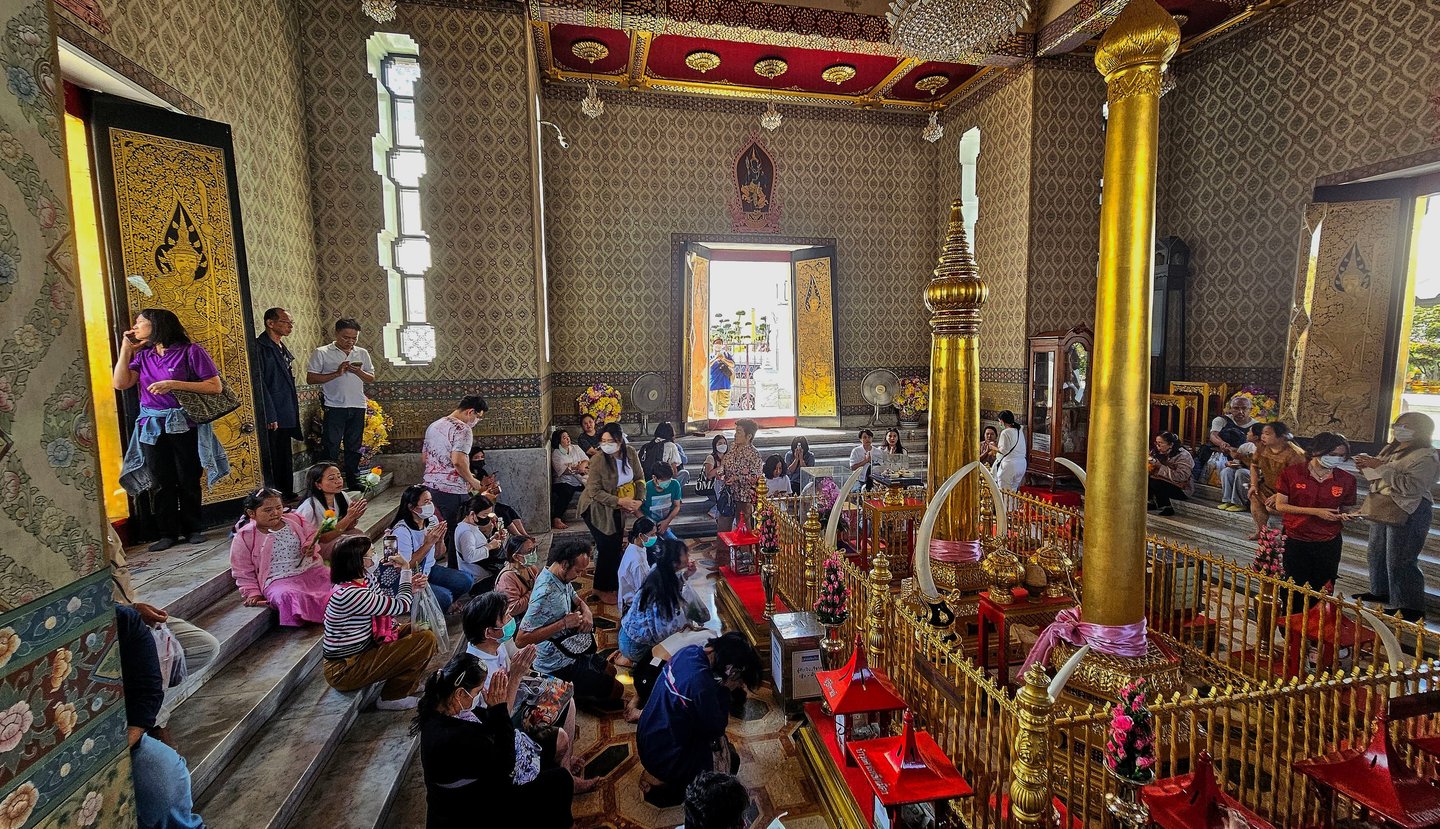

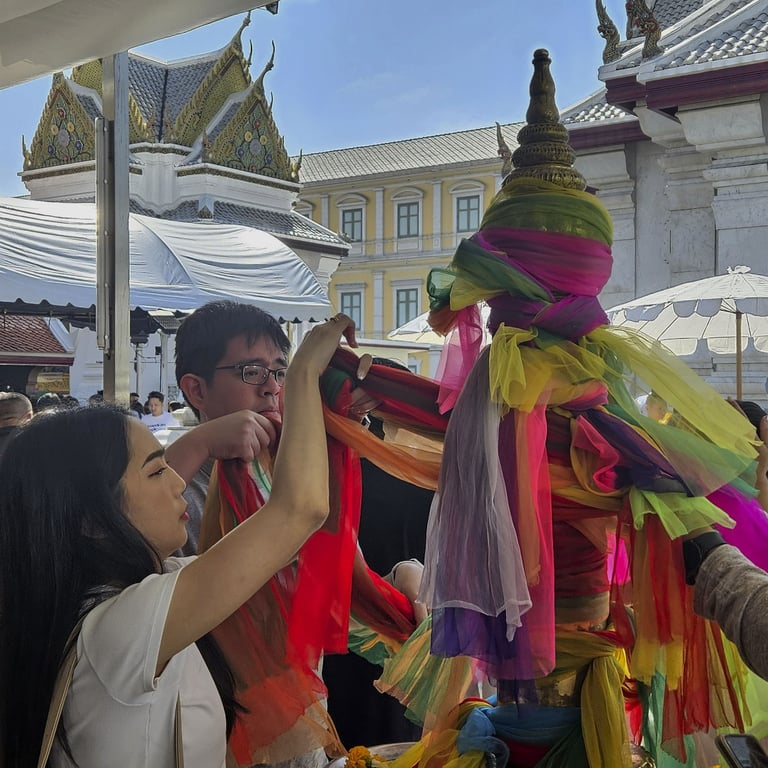
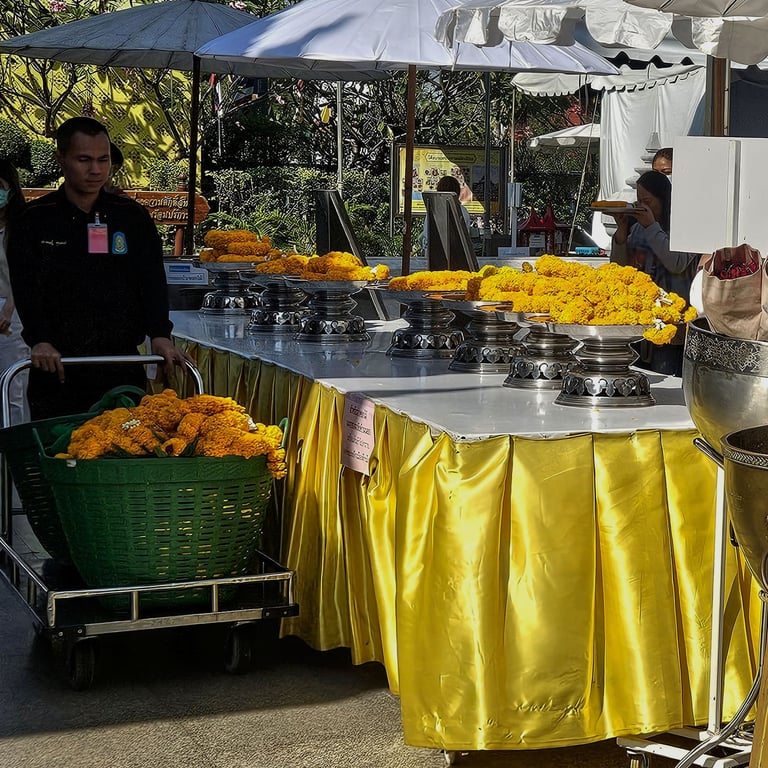
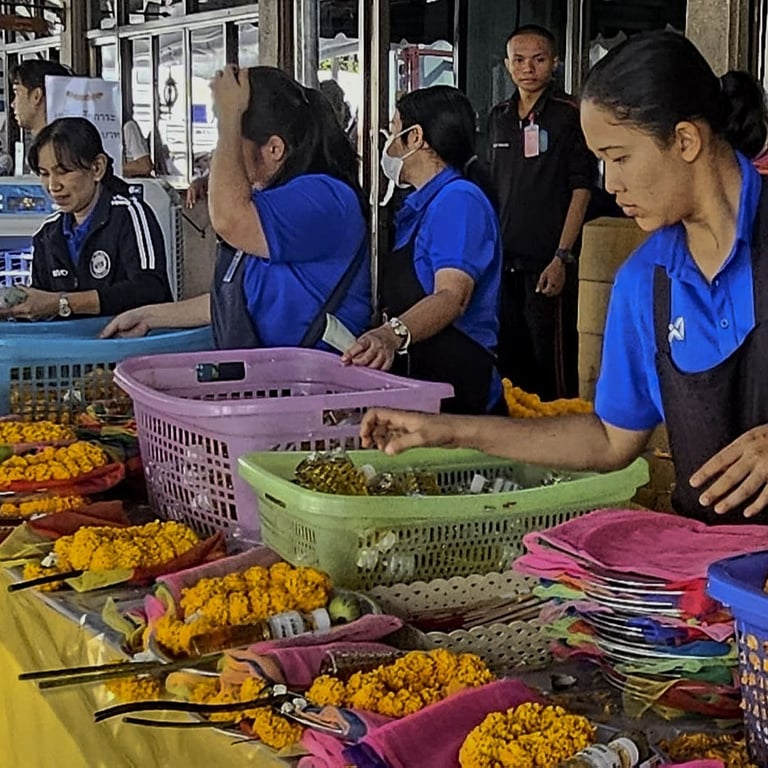
Wat phra that Chaiyaphum
Nested Buddhas
From Sai Thong National Park in Chaiyaphum Province to this wat took over two hours in the car. As is often the case, wats are located in such obscure locations. You drive along for mile upon mile through well-cultivated green fields of this and that, with absolutely nothing to suggest a splendid destination is in the off. As the road starts to climb and snake its way upwards, you do start to think, ‘This would be a good place to build a wat…’ The way up begins with red prayer ribbons tied all over, even to the elephant’s trunk for extra luck, and ends with a setting commanding views all around. The nested gold standing Buddhas make a strong visual for your camera, with a bit of blue sky adding the finishing touches.
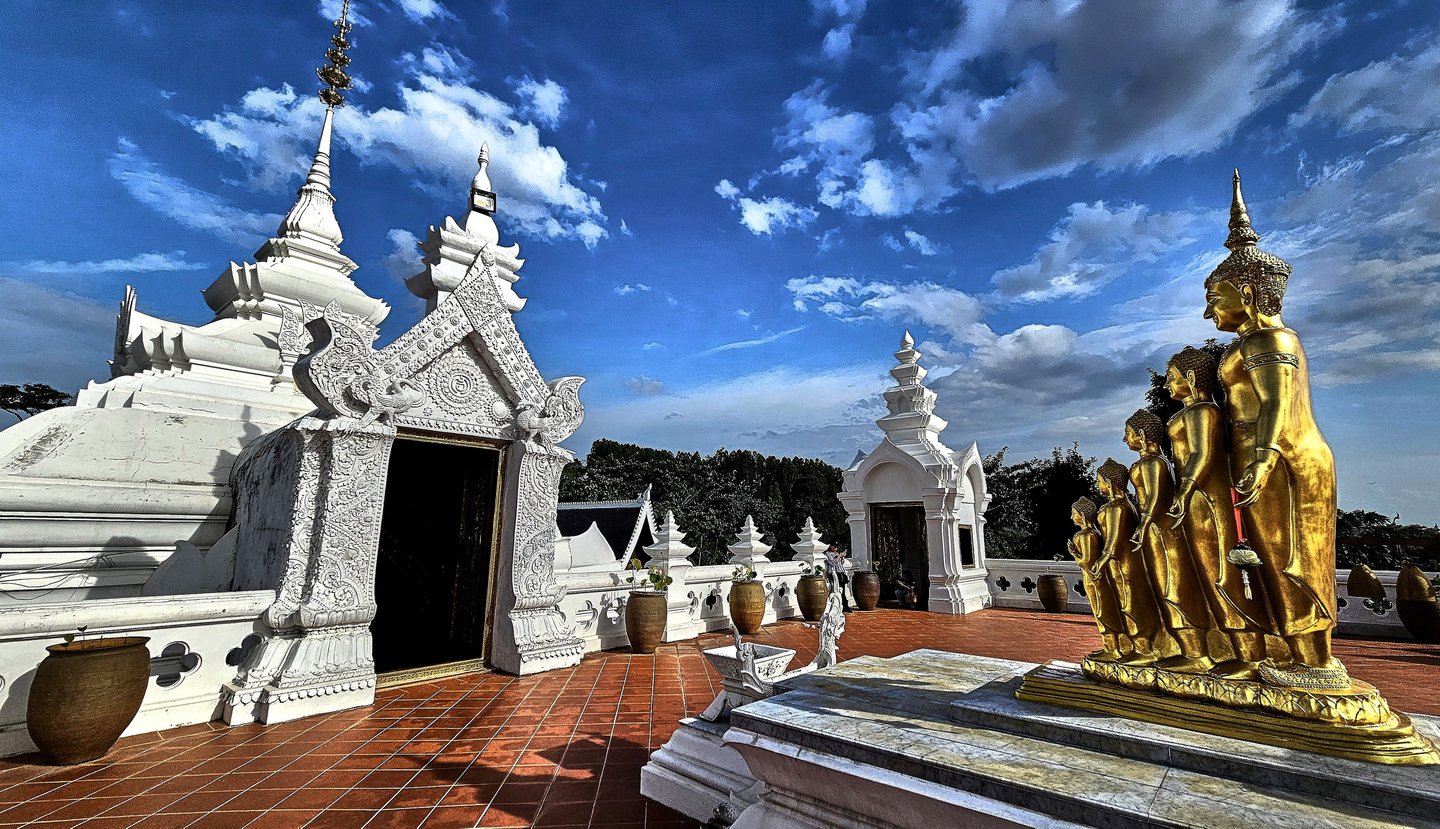

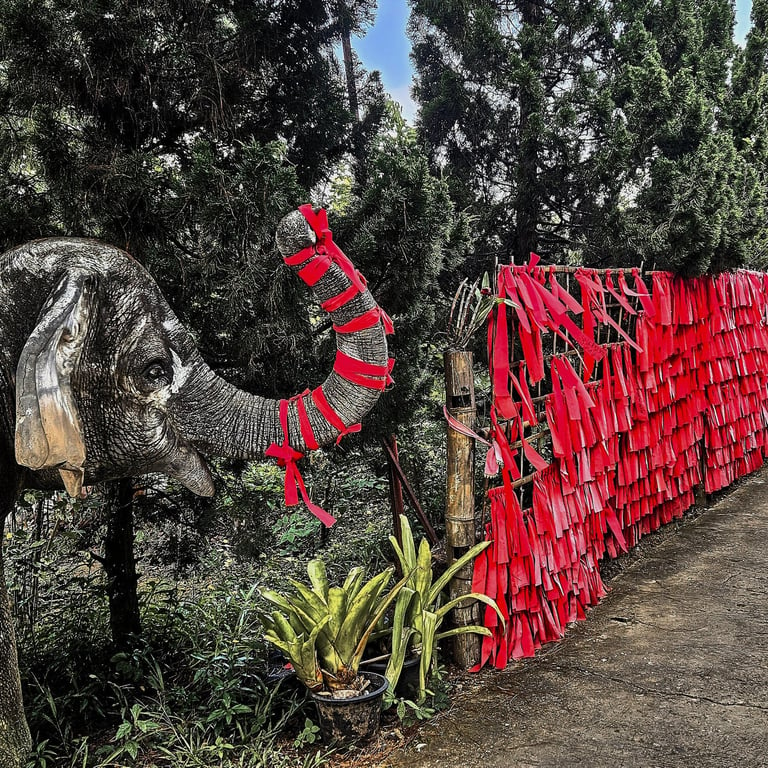
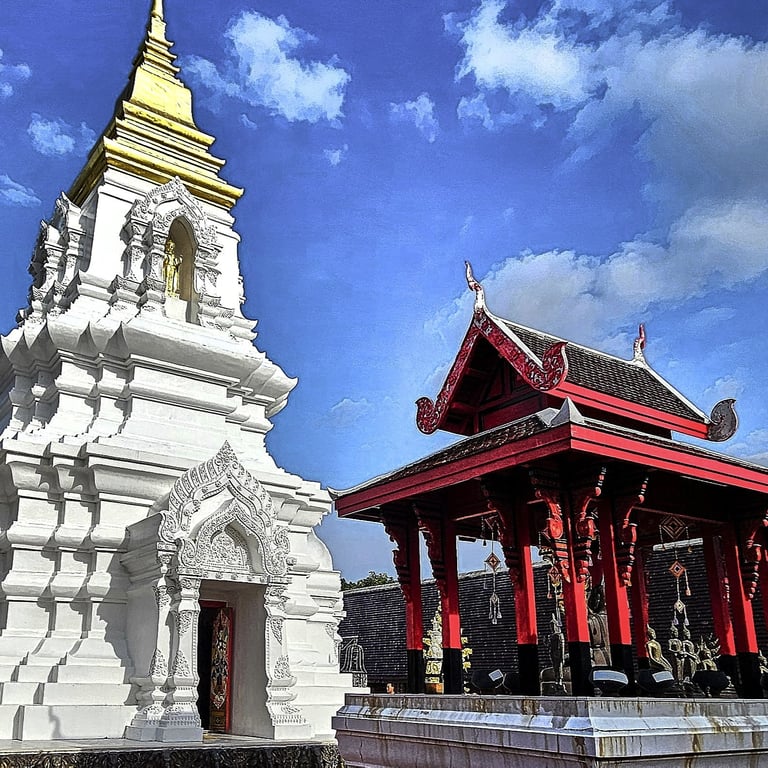
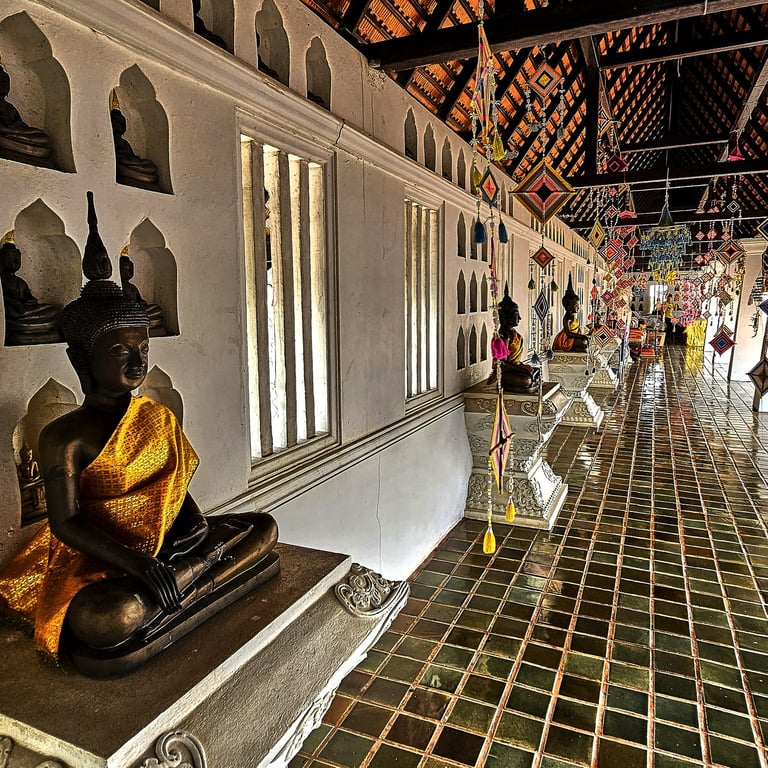
Wat phra that nong bua, ubon ratchathani
A Quincunx
This striking tall pyramid is surrounded by four smaller ones at the corners of the square – a layout called a quincunx, like Angkor Wat. With a wide apron of tiles, there is quite a bit of padding shoeless as you make your way round; rather skiddy after a recent shower (having wet socks was less appealing). Once again, the interior of a wat offered up a surprise – you never know what to expect with odd-shaped exteriors – this one with a kind of lattice structure disappearing upwards. The OTOP styled market outside looked really promising but exiting the wat it was all but wrapped up. Off by 6 pm sharpish was the obvious instruction – I did wonder what the penalty was for missing the deadline – it clearly works!
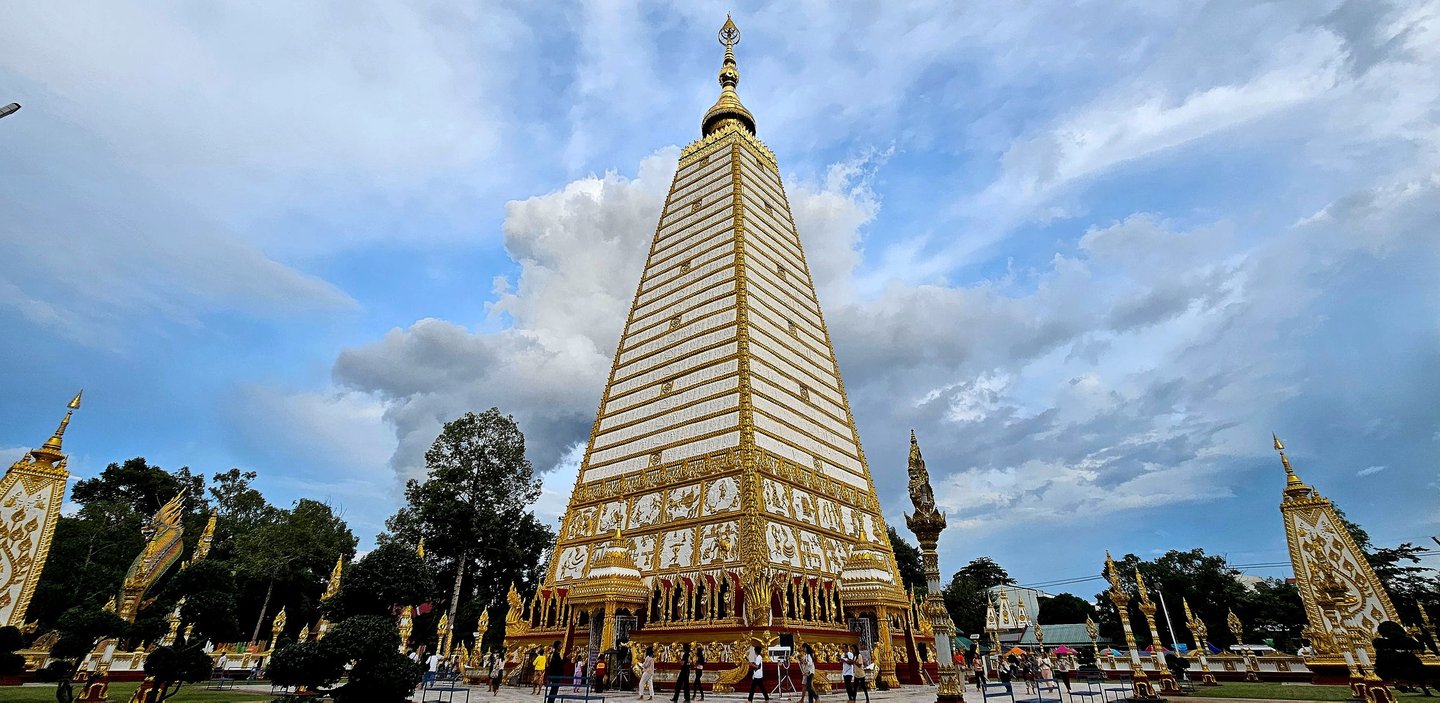

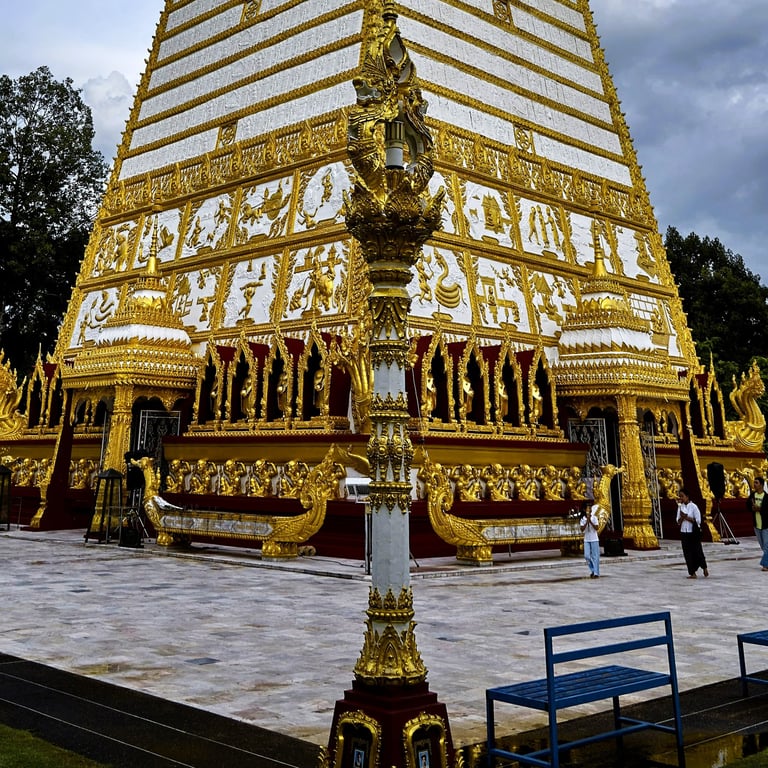
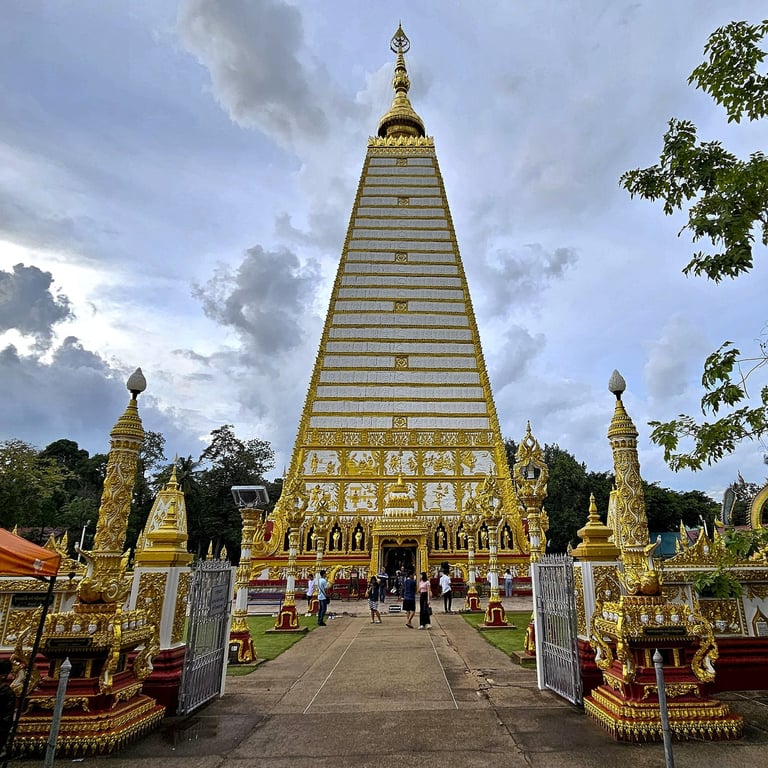
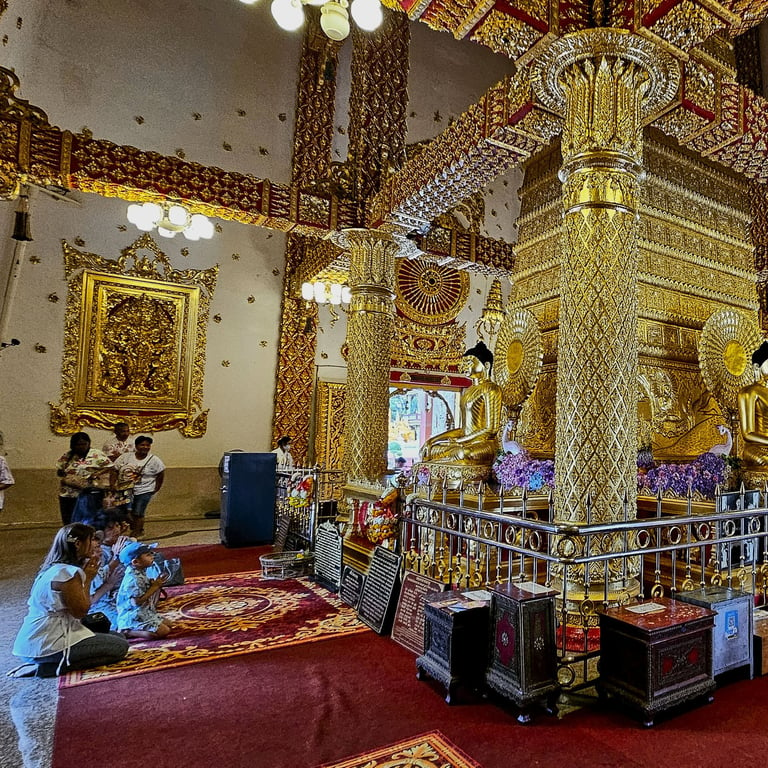
Wat boonyawad, chonburi province
Meditation Centre for devotees
Wat Boonyawad in the outer eastern reaches of the province is remote and surrounded by rubber and palm oil plantations. It’s one of those where you park the car but there are no clues as to which way to go, so you follow a group who look like they know what they are doing. They don’t. The second car park at the top leads you to the main stupa and its commanding views across the countryside. The wat is a centre for meditation, with the view certainly augmenting the experience.
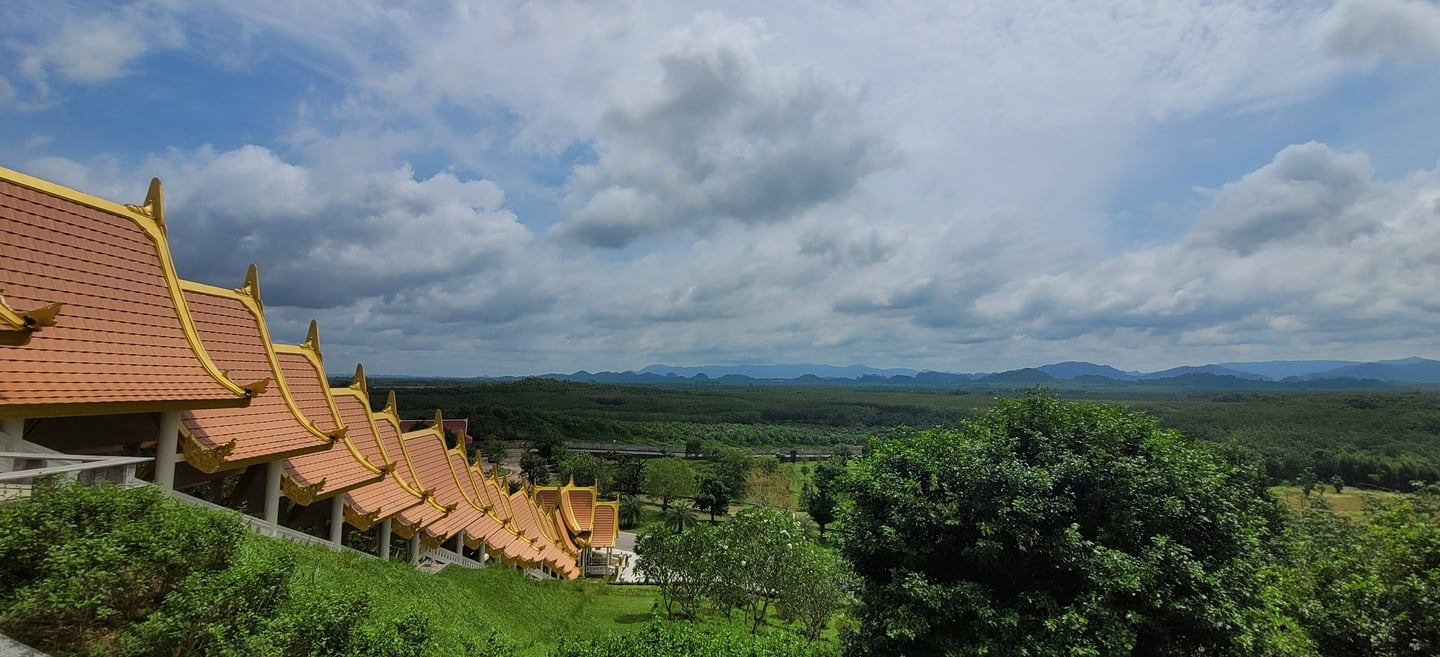

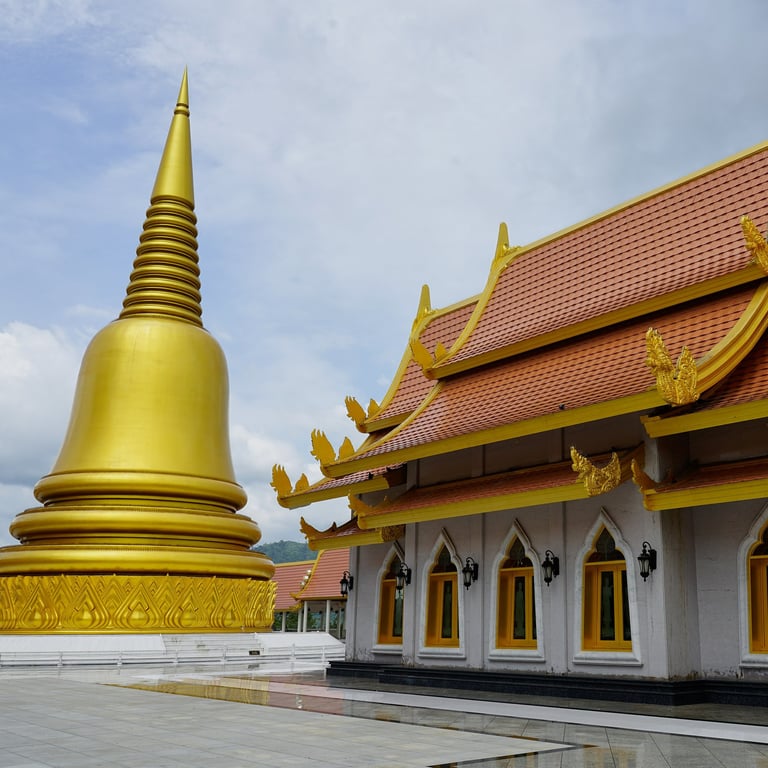
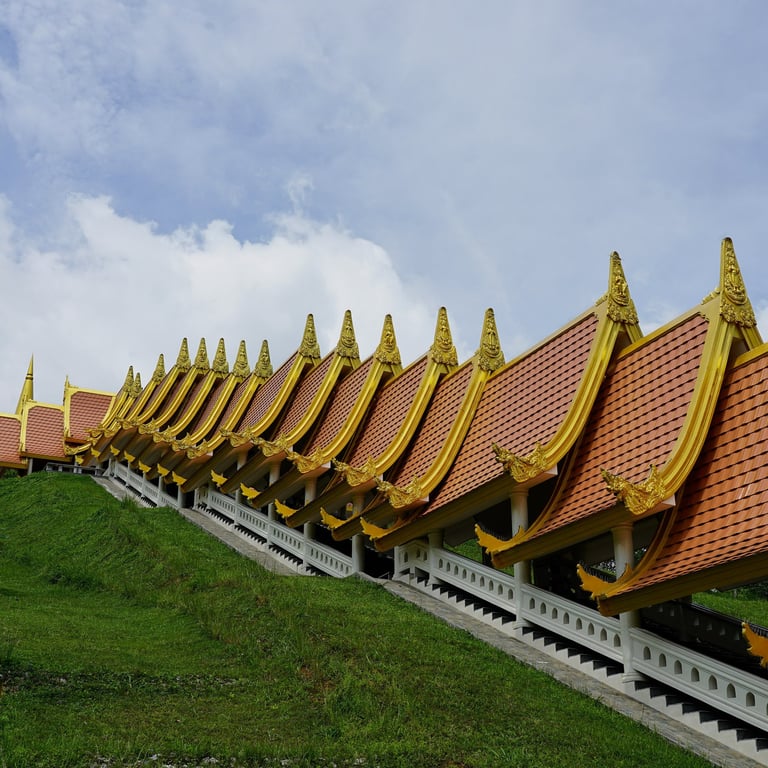
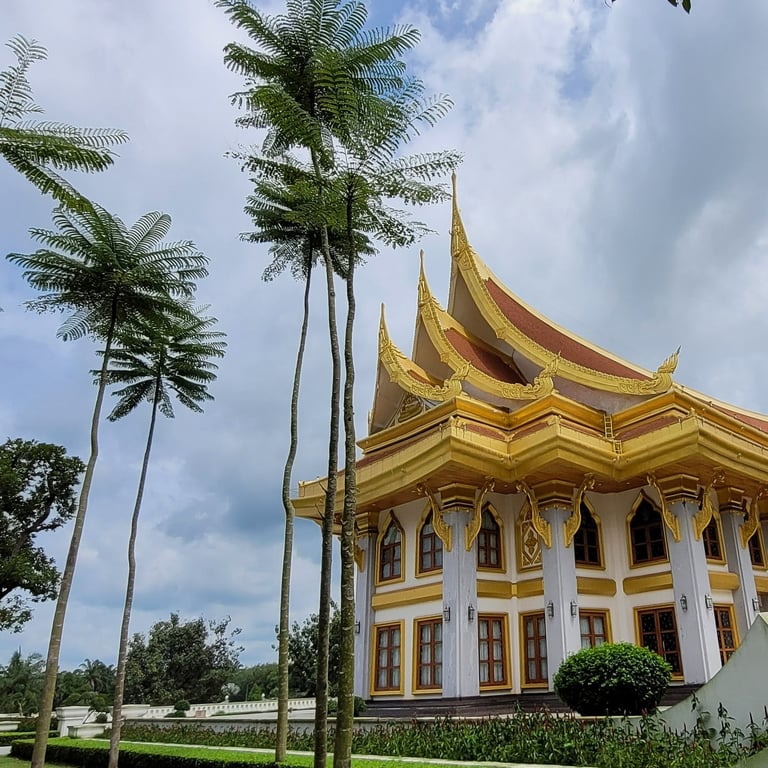
Wat devaraj kunchon, bangkok
Feed the fish!
Wat Devaraj Kunchon is by the Chao Phraya River in Bangkok. The interior of the ubosot is exquisitely painted in rich blue and red ochre. On site is also a teak museum with a display of tree-rings going back to the 1500s. Release a fish into the river for extra merit, or just feed them with food from the adjacent market. Huge catfish churn the waters awaiting your best efforts. These wats in old Bangkok are always a bit of a hike to get to from the nearest public transport stop, and invariably leave your shirt soaked with sweat for your troubles. Just dry out in the MRT train air-con on the way back.

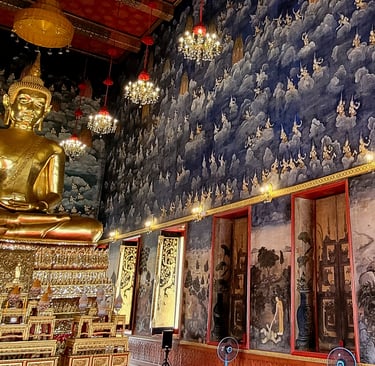
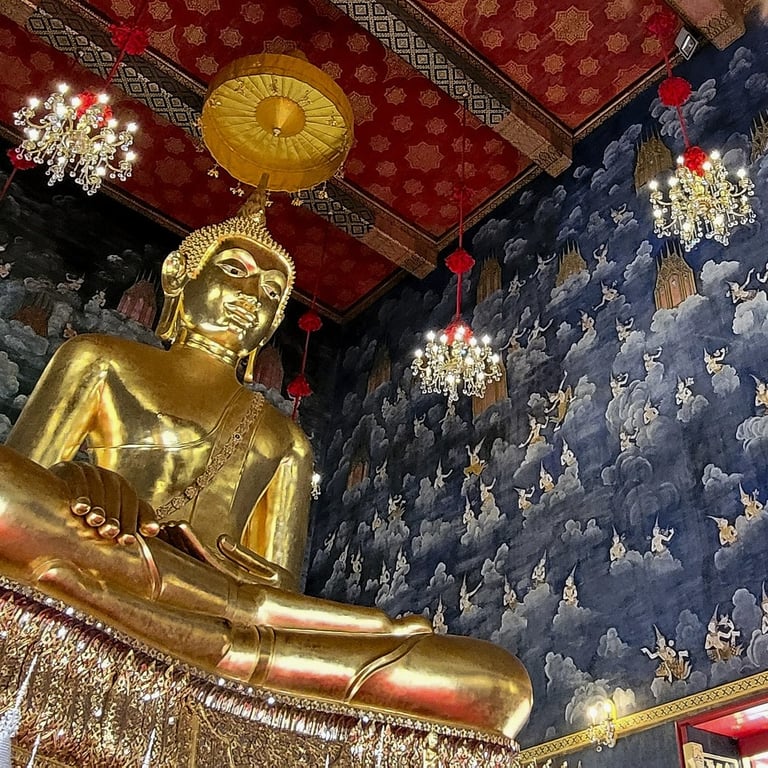
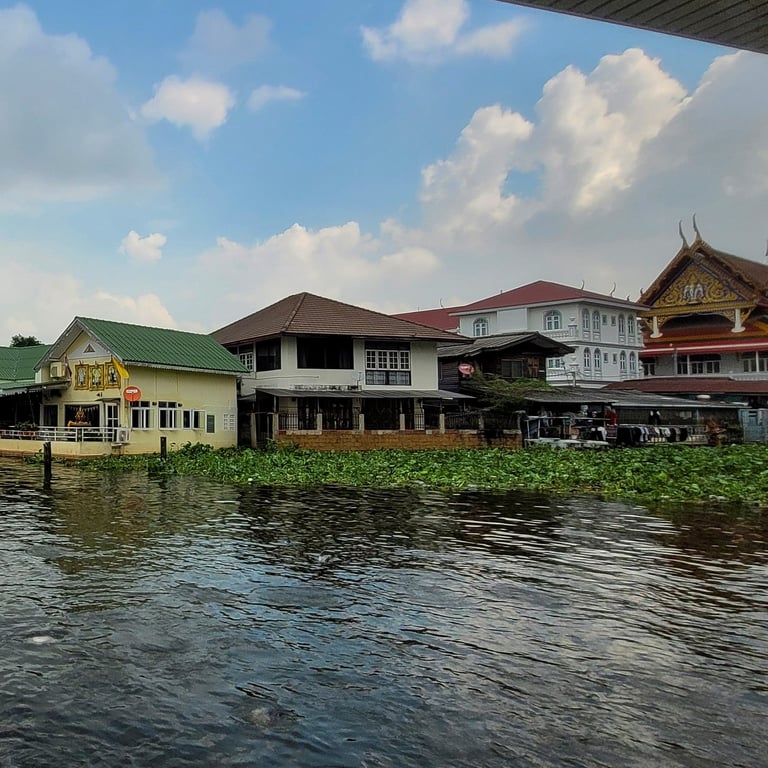
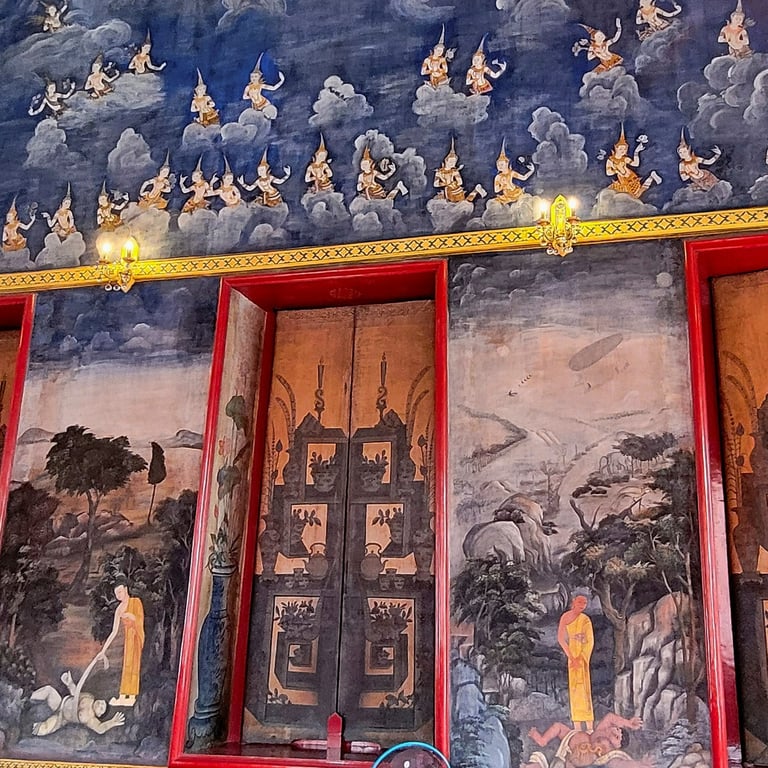
Wat neramit wipatsana, loei province
Red-ochre hit
As you approach Wat Neramit Wipatsana it really looks like it wasn't worth the long detour to get there. Up and down, round and round as you follow the hilly contours. Walking round the laterite brick exterior you might be forgiven for focusing on what you are going to have for lunch later in order to bring some cheer to the day. Once you step inside though, you are facing a red-ochre assault. It is hard to keep your eyes off the rich detail in every nook and cranny. Craning silently upwards, I imagined I heard, 'Your mouth is open, dear,' in several languages.
